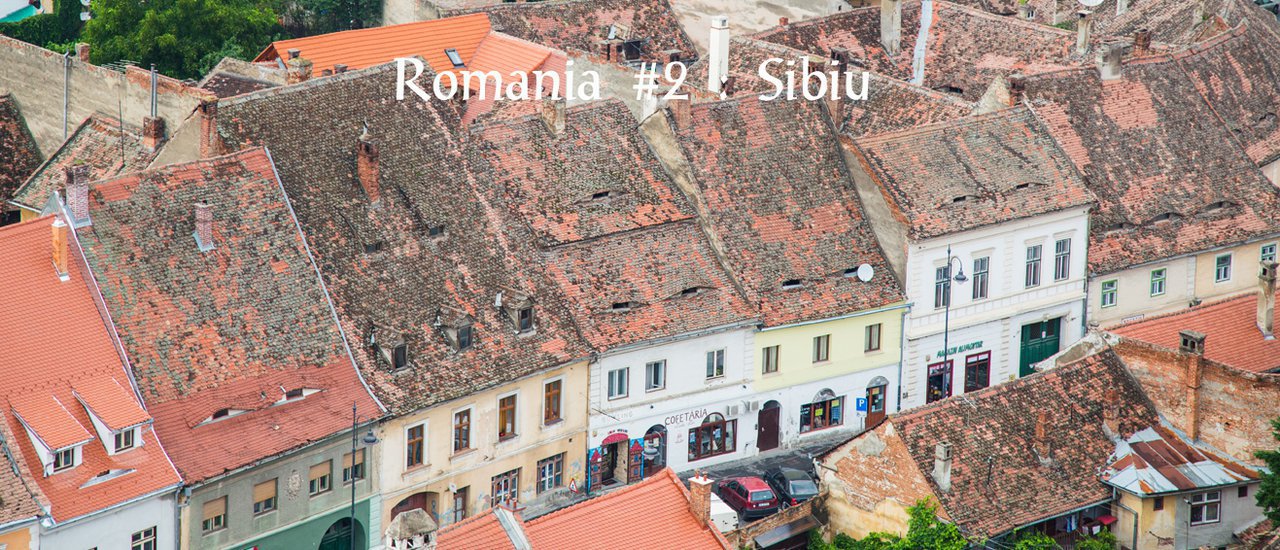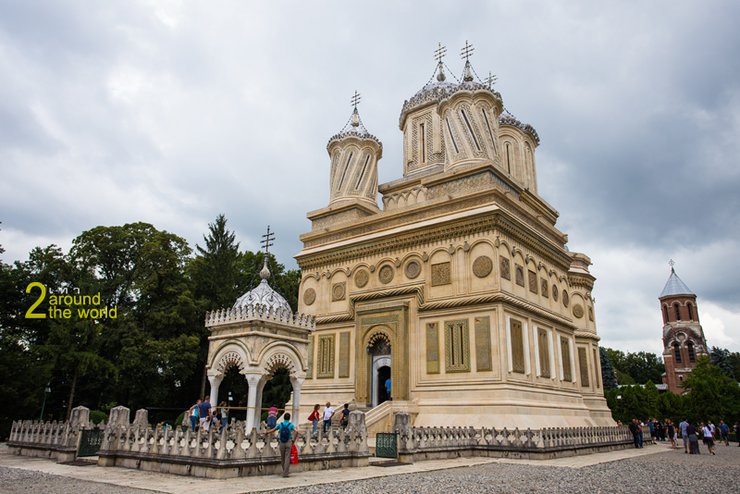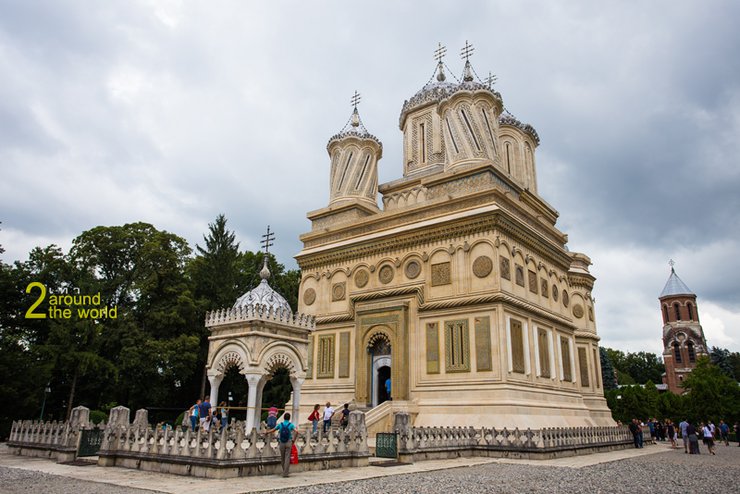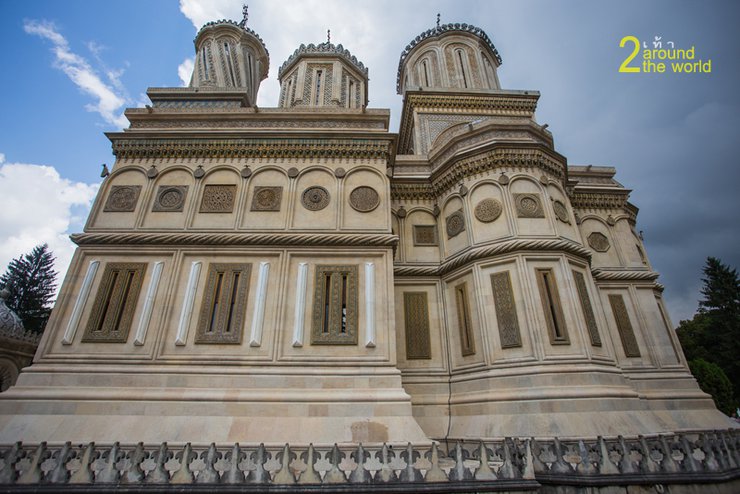The previous episode: ROMANIA #1: Bucharest at https://th.readme.me/p/5232
We now head towards Sibiu which is our destination for today. But we will stop along the way and our first stop is the Curtea de Arges.
Curtea de Arges town is about 155 km away and about 2 hours from Bucharest on the north-west.


In front of the Curtea de Arges Monastery or St.Nicholas Church is a sculpture of the Prince Radu Negru, the founder of this church. No admission ticket is needed to visit this church.


Soon after walking from the entrance, we see the magnificent Byzantine architectural chapel. It is seamlessly blend with Moorish art form.The chapel was built from light gray limestone but inside was made from the red brick. The most prominent feature of this building is a high dome on cylindrical towers which is decorated with slight twisted stucco. It looks uniquely beautiful. This church is a religious place of Romanian Orthodox Christians. It was built in 1512 and renovated as seen today at 1886.

This chapel also appears on the back on the 1 lei bank note.
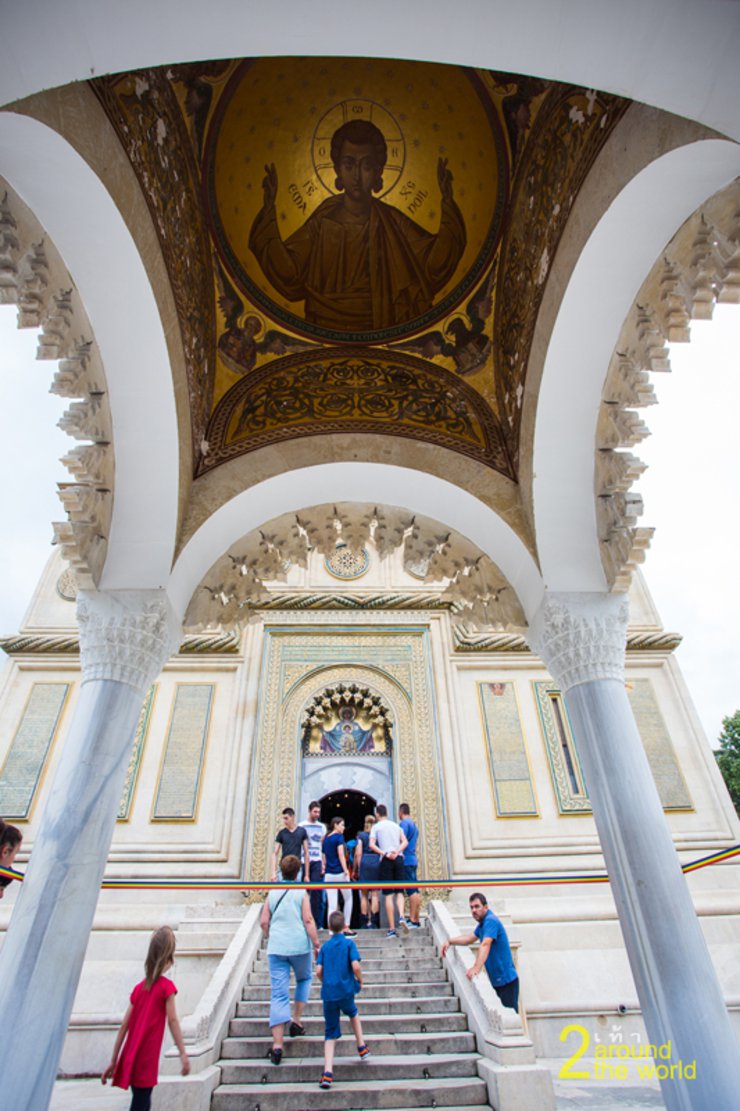
This chapel was built to honor St. Nicholas who is the most respected saint in the Orthodox Christian.
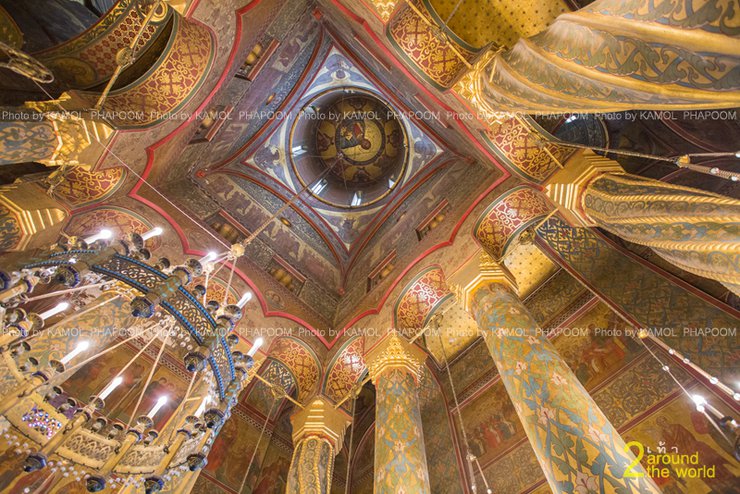
In addition to some twisted external dome, some of the inside pillows are also twisted.
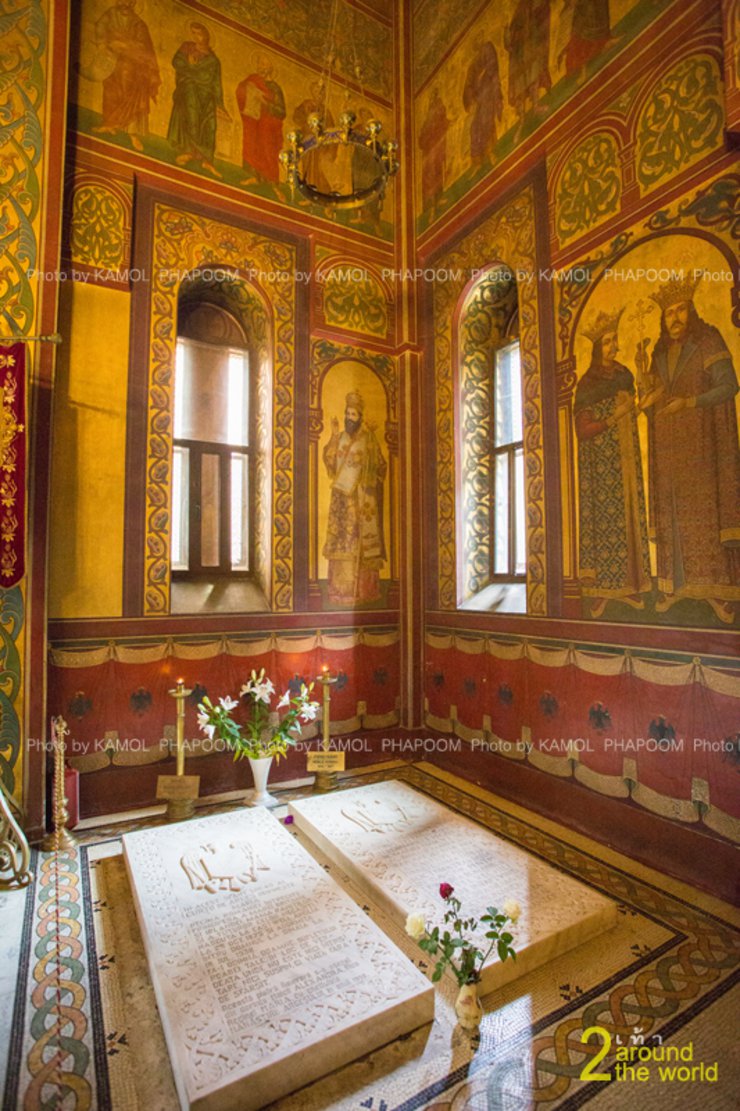
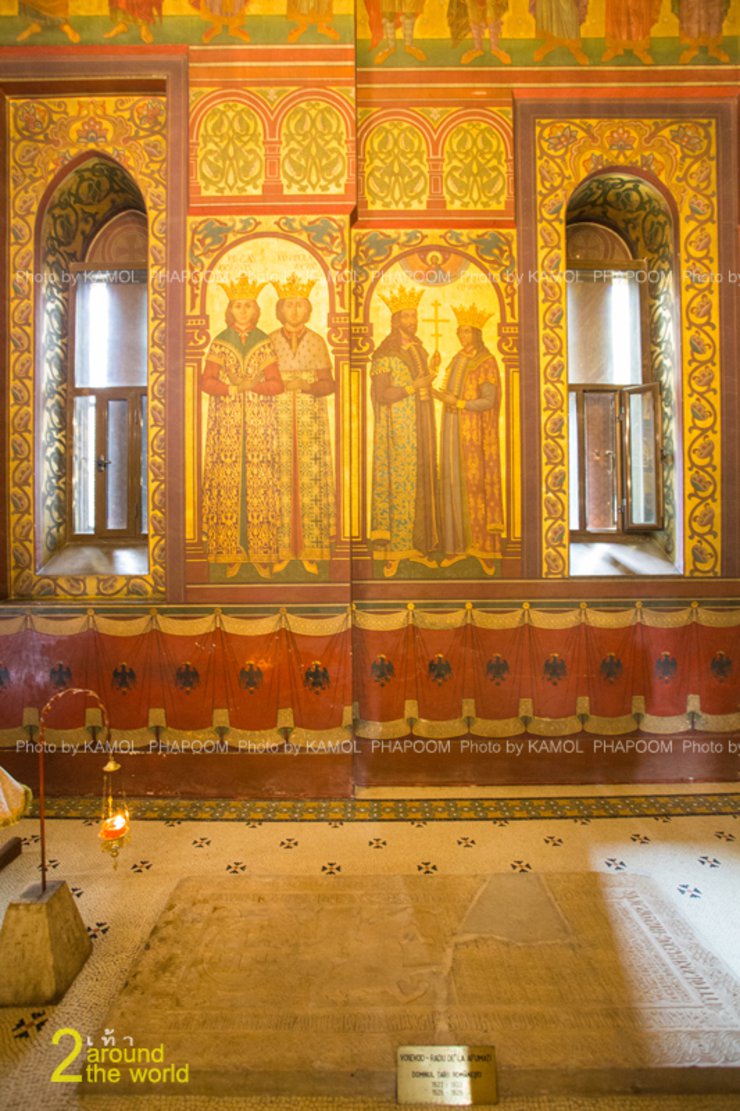
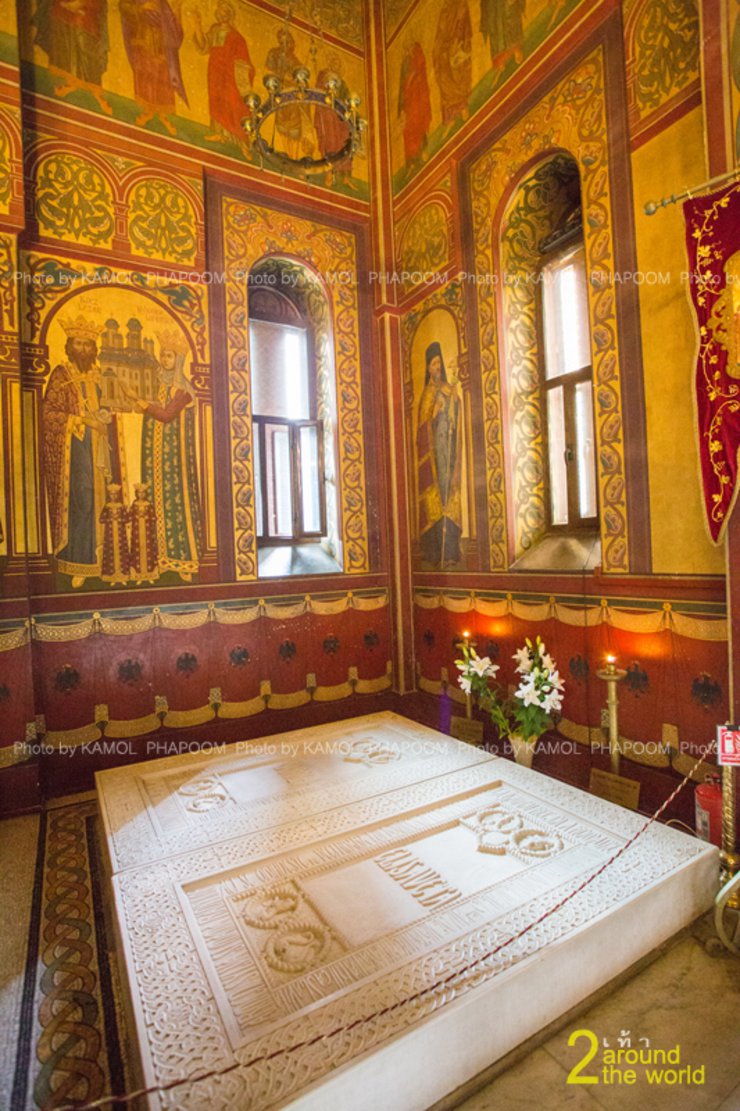
All along the way towards the most inside of the church, on the left and right side is the grave of famous and important people to this church.
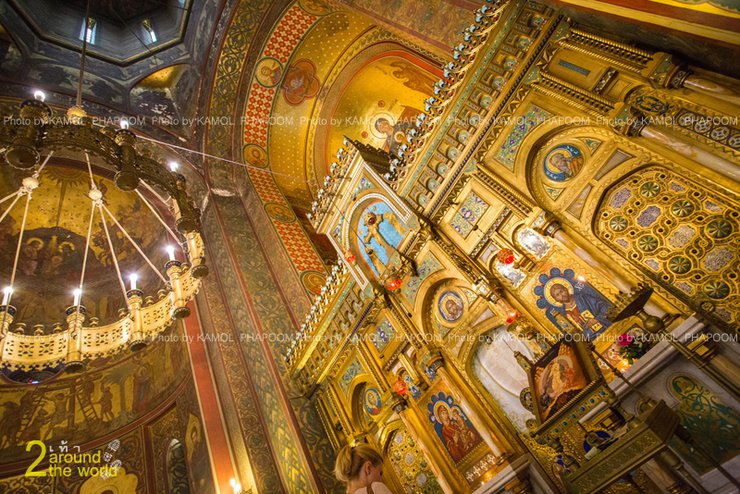
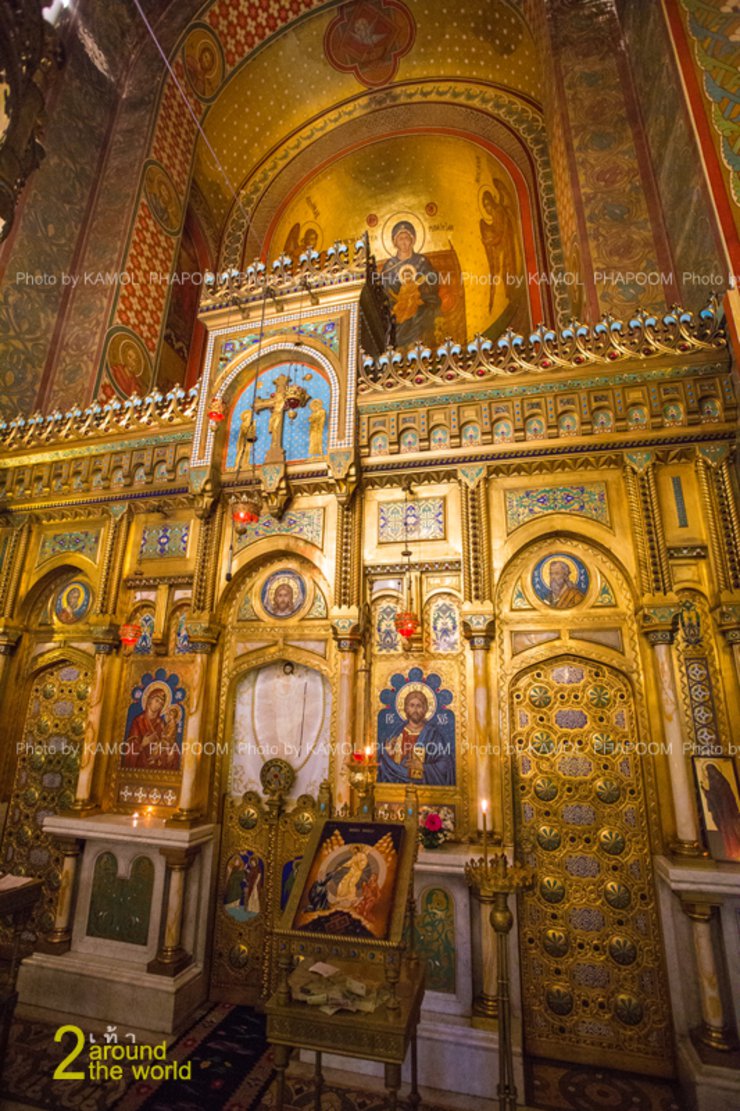
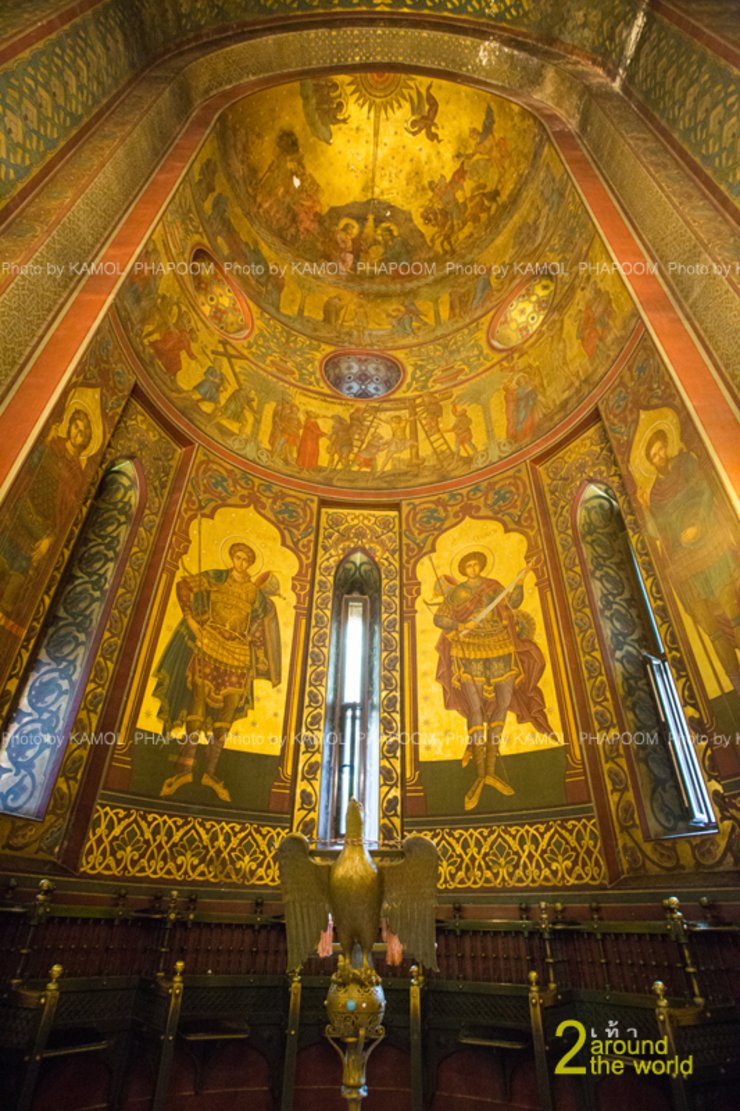
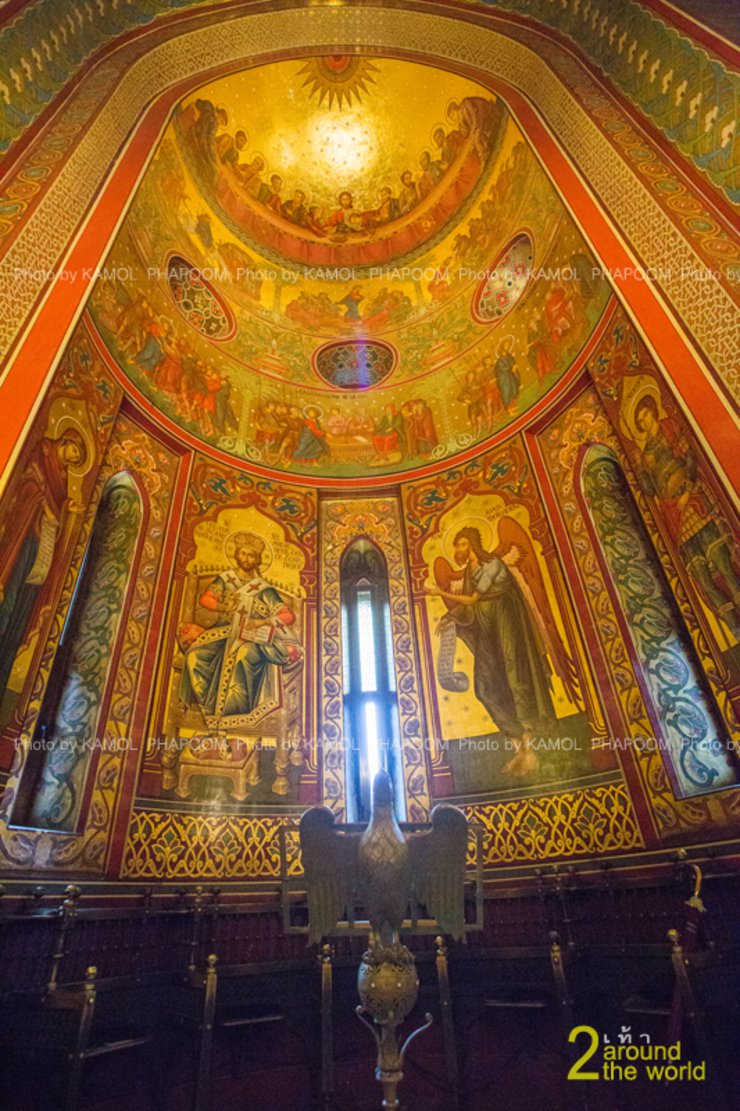
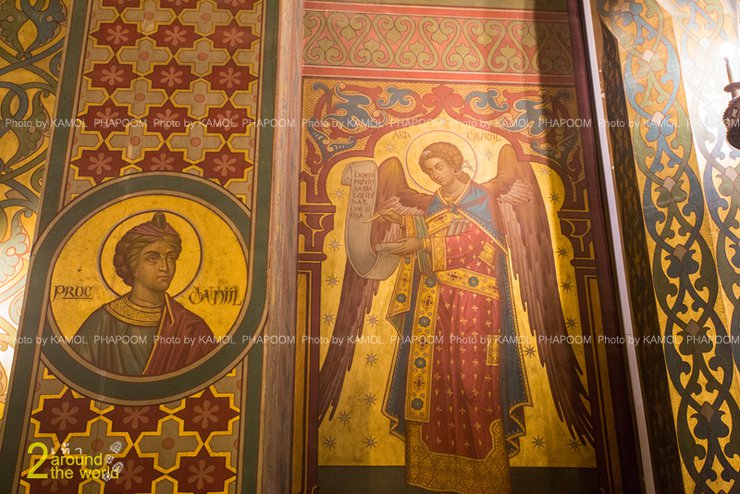
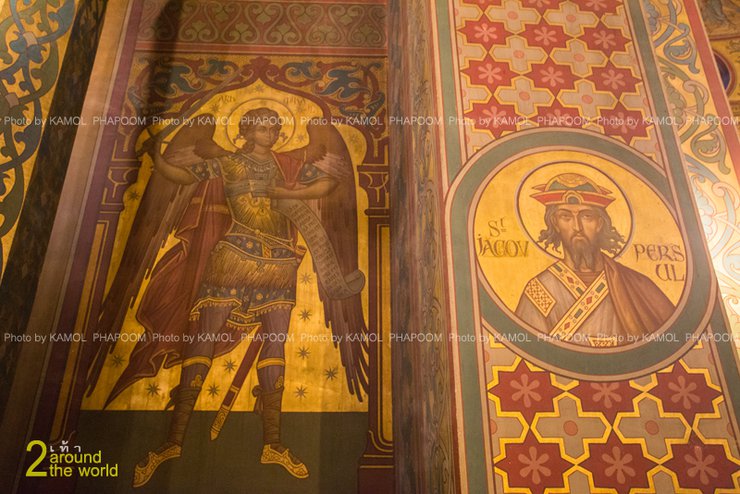
Inside the chapel is beautiful fresco paintings. I can say that no matter where I look, it's so beautiful like the wall, the pillars, and the ceiling, especially when they reflect with the light from the chandelier, the paining grows even more golden and glittering. This chapel is registered as the national heritage as well.
While having fun taking the photos, a grandpa walks towards me and tries to explain something by pointing to my camera and shakes his head. I think he tries to say that photography inside is prohibited. I'm not sure whether it's strictly prohibited or we have to pay the fee. All I can do is apologize and he left me.
There's telling about this chapel that the Prince Radu Negru, the Walachia ruler. He paid Manole to control the construction but no matter how hard he tried, he couldn't build up the wall. The Prince Radu Negru threatened Manole if he failed to build this chapel, he would kill everyone involved in this construction. Manole recalled the ancient rite of Moldova where the live body of a woman has to be buried on a side of the wall to dedicate to the god when building any chapel. It is agreed that the first woman to appear at the chapel will be scarified. That night, Manole prayed the entire night that his wife not to be the first to reach the chapel while the other told their wives not to go to the chapel. In turned out that only Manole's wife showed up at the chapel resulting she and her baby in pregnancy were buried alive under the chapel. Thereafter, the chapel was successfully completed.

There's one more church behind the Curtea de Arges Monastery. If times allows, you can also visit inside. I didn't take any photos as I'm afraid that it's also prohibited. The beauty inside can't be compared to the main chapel.
According to the plan, after the Curtea de Arges, we will stop at Poenari Castle. Since we must walk on foot to about 1,480 stairs which requires quite lots of time. All the members in the trip agree that we will cut this program out so that we can enjoy more at Sibiu.
The road starts to go into more mountains and abundant forest. I look out the window to see the Poenari Castle from afar. I really wish I can stop and capture the Poenari Castle but the road is narrow and steep so we can't stop. But that's alright, at least the image of Poenari Castle has already embedded in my memory.
Soon, John takes us to stop at Vidraru Dam.

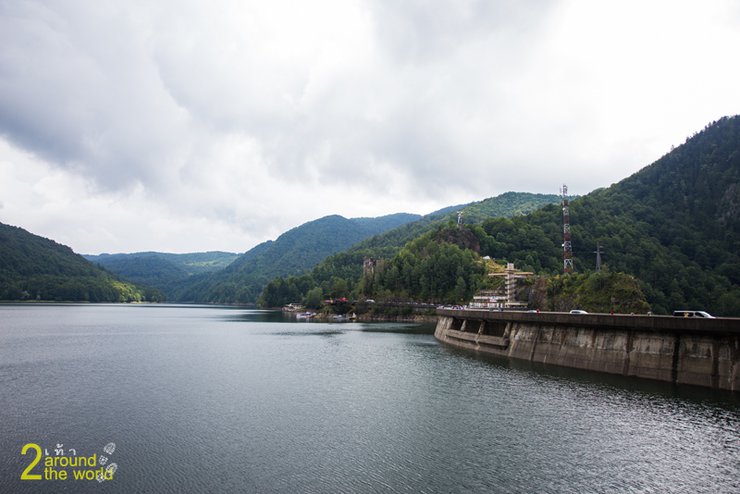
Vidraru Dam was completed in 1966. It was built to block Arges River and Vidraru Lake to generate electricity. It is the concrete arch dam with a height of 166 m, 305 m long and can hold around 465 million cubic meters of water. The dam looks like Bhumibol Dam in Thailand (Bhumibol Dam is 154 m height, 486 m long and can hold about 13.462 cubic meters of water). The atmosphere here is quite good. We can see that lots of tourist keep coming here for relax. It's unfortunate that the sky is closed on the day I visited, otherwise, it'd have been very beautiful.
Along the way, we see the Romanians are picnicking. Where there's a space to set up a fire for cooking, many cars are parked. But where there's a stream, many people are picnicking.
The rain soon to fall but it's not hard so it doesn't obstruct our journey. Anyhow, when we are getting higher, it's more humid and now we almost see nothing as it's all covered by the mist. I got a bit scared now as we need to go up the mountains and keep turning along the curves left and right.


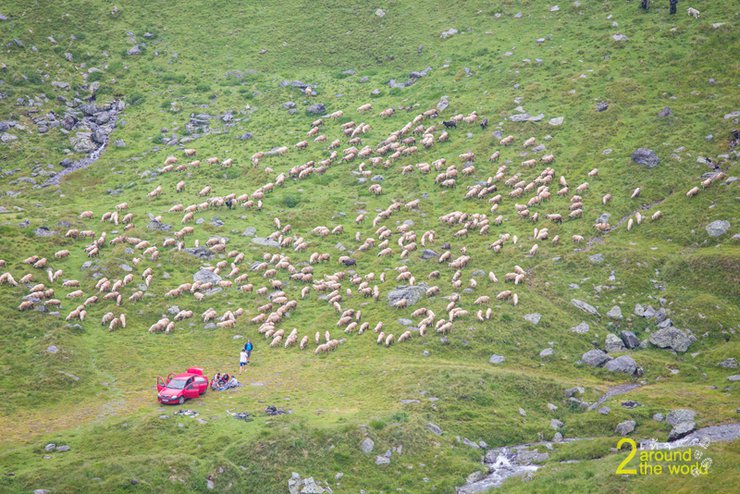
When the rain starts to stop and the fog starts to fade, I quickly ask John to pull over in order to capture the scenery on Transylvania path. This road is known as the most beautiful road in Europe. It's covered by grass just like it's been carpeted. Waterfalls are to be seen along the road. It's really beautiful. This road is only allow to commune for 2 months from July to August. I just get to stand there and appreciate the beauty of about 10 minutes before the rain starts to fall again.
Then, we start on the road a bit before we stop for lunch near the lake. However, the lake is not visible now due to the thick fog (actually the lake is right next to our restaurant). The same goes to our restaurant. The more I go backward in order to capture the entire image, the more it is faded and almost nothing is visible.
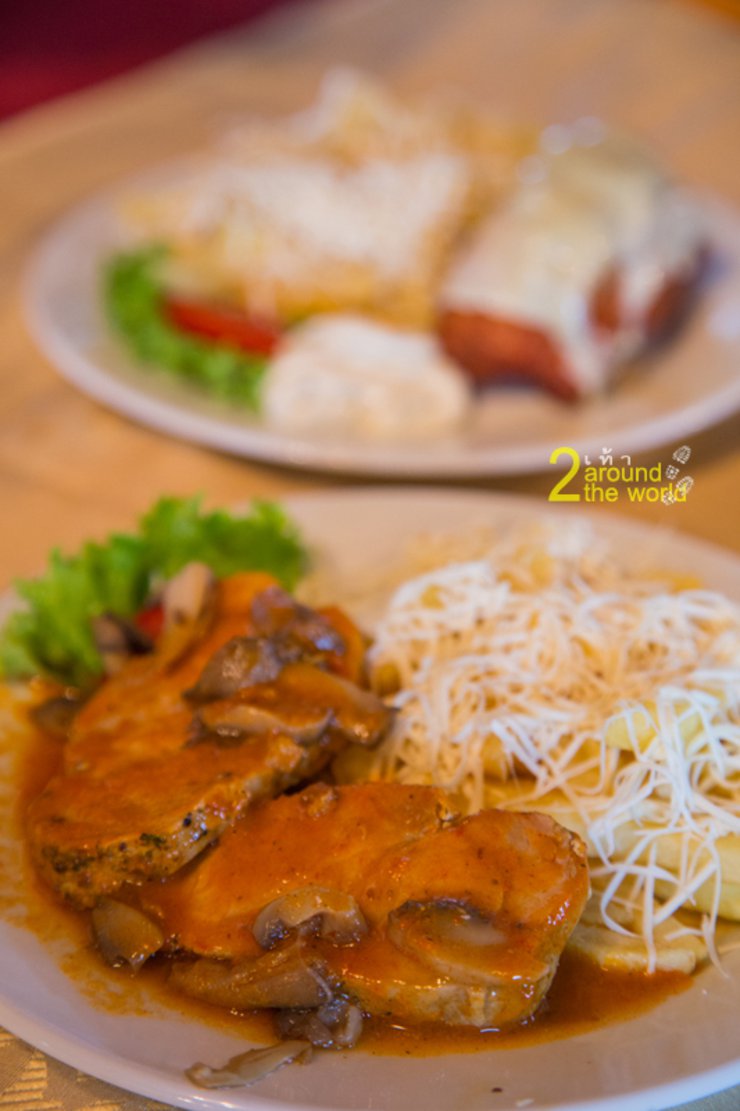
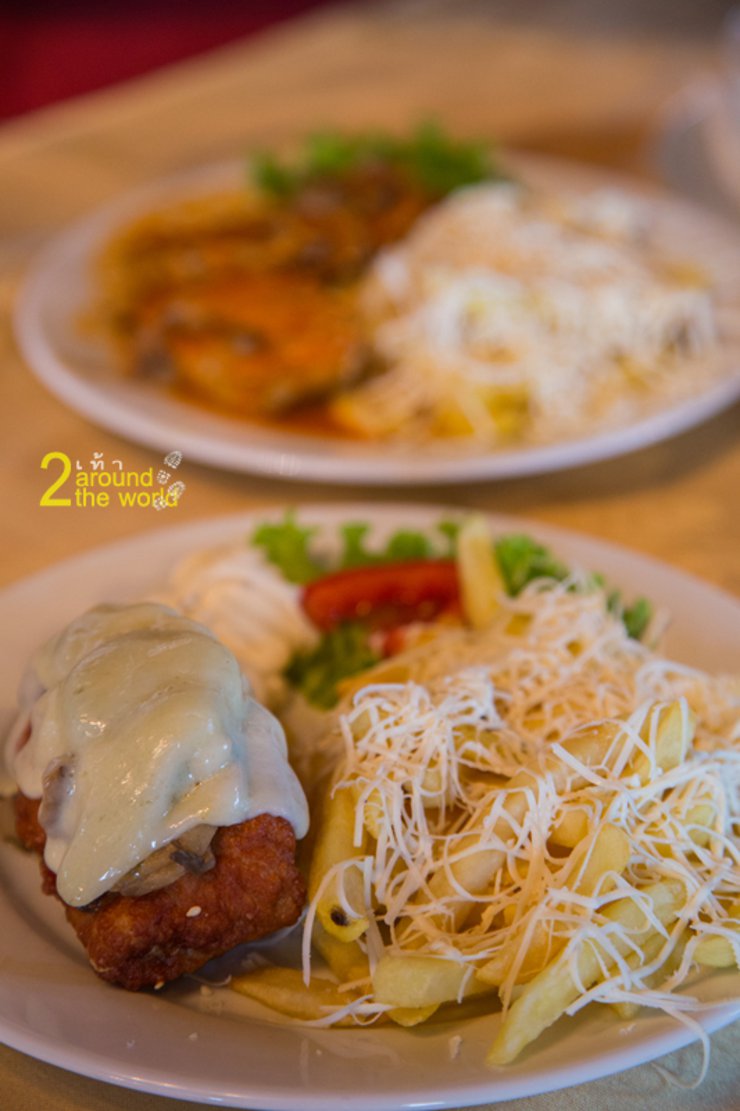
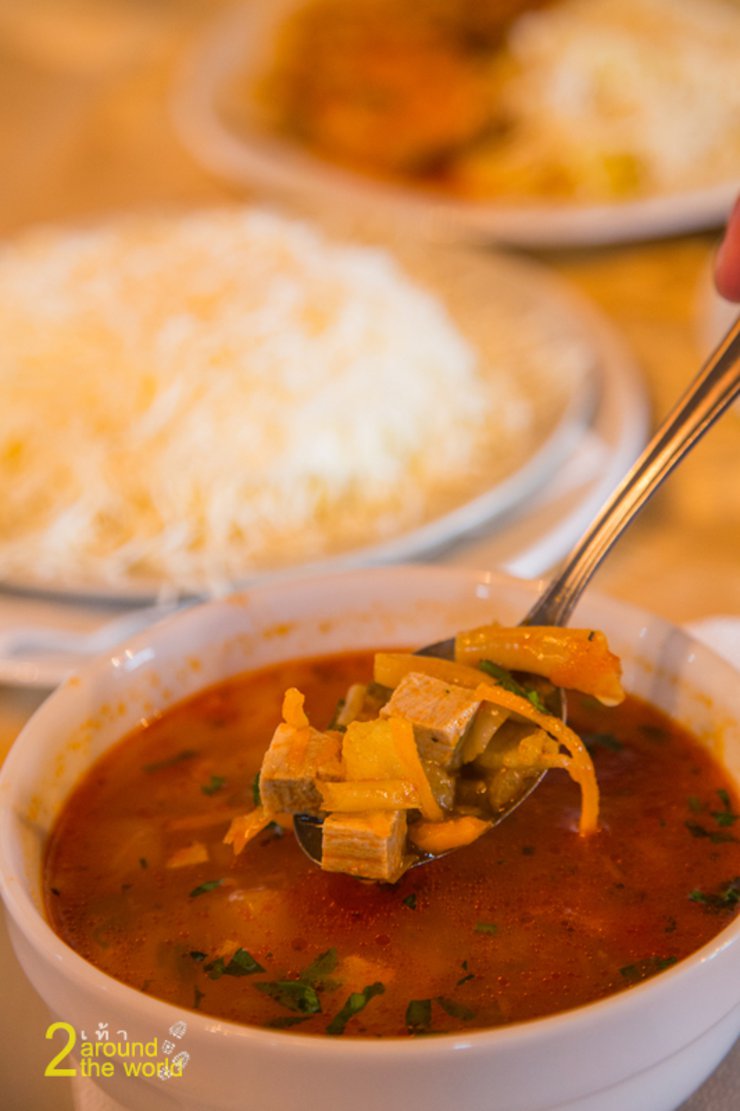
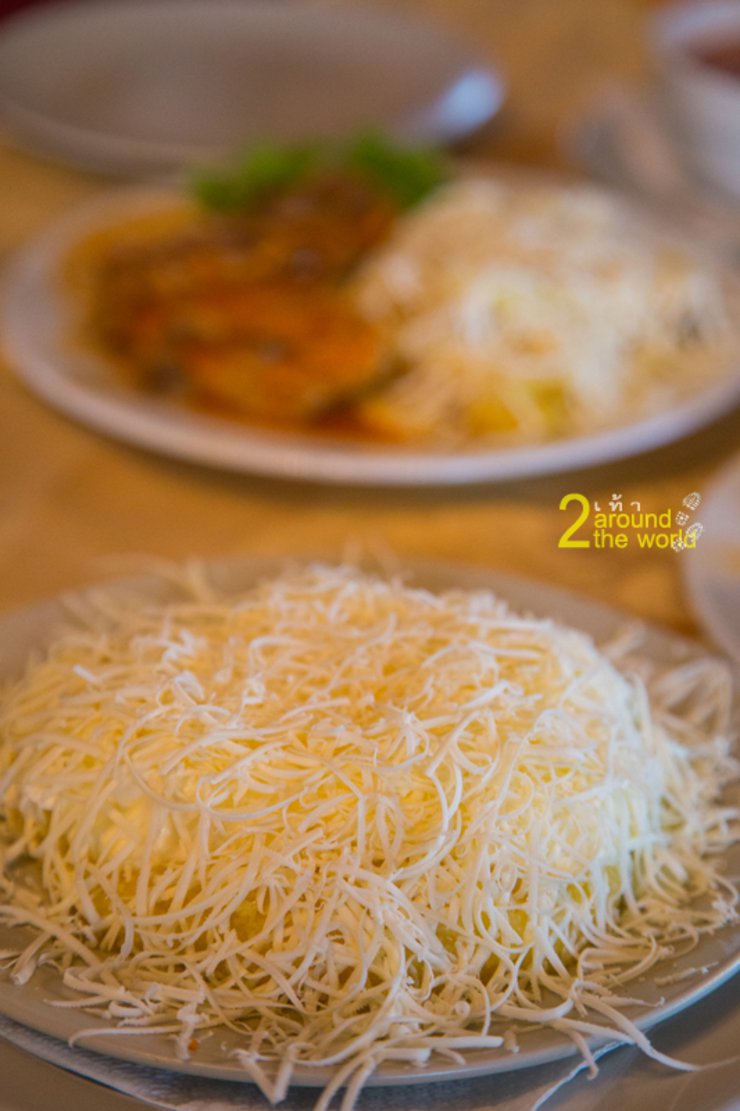
The weather inside the restaurant is very warm which is completely different from the outside. John ordered this meal for us. The food includes the pork topped with mushroom sauce, Romanian Sausage, soup and Mamaliga. The noticeable thing is shredded cheese which is used to decorate every dish.
In the winter, the area around the lake is the skiing park and nearby the restaurant is the cable car station taking skiers from below to the skiing park.
Now that we are full, it's time to continue our journey to Sibiu. Before reaching Sibiu, we are going to stop at the Astra Museum of Traditional Folk Civilization.
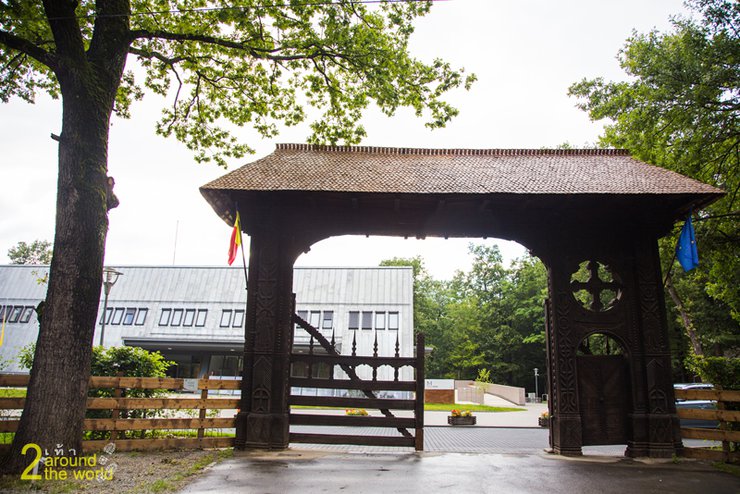
There's big wooden gate in front of the Astra Museum of Traditional Folk Civilization.
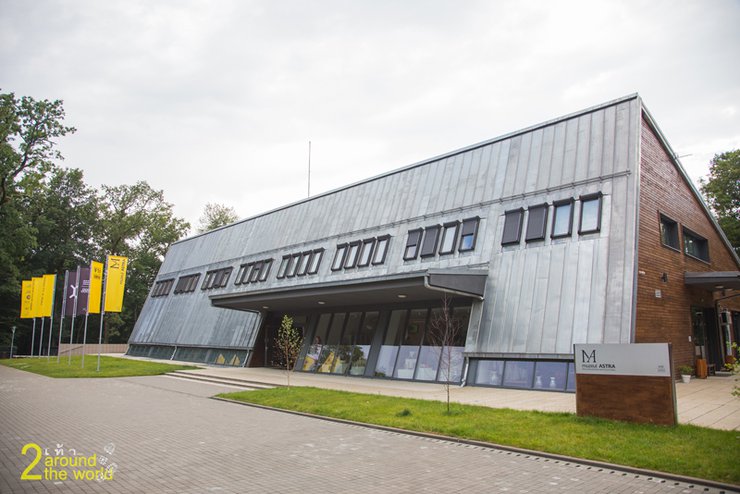
We stop to buy a ticket first. In addition to selling the ticket, this building also sells souvenir which is quite inexpensive and some of them is even cheaper than the ones from other tourist attraction. The ticket is 12 lei each.
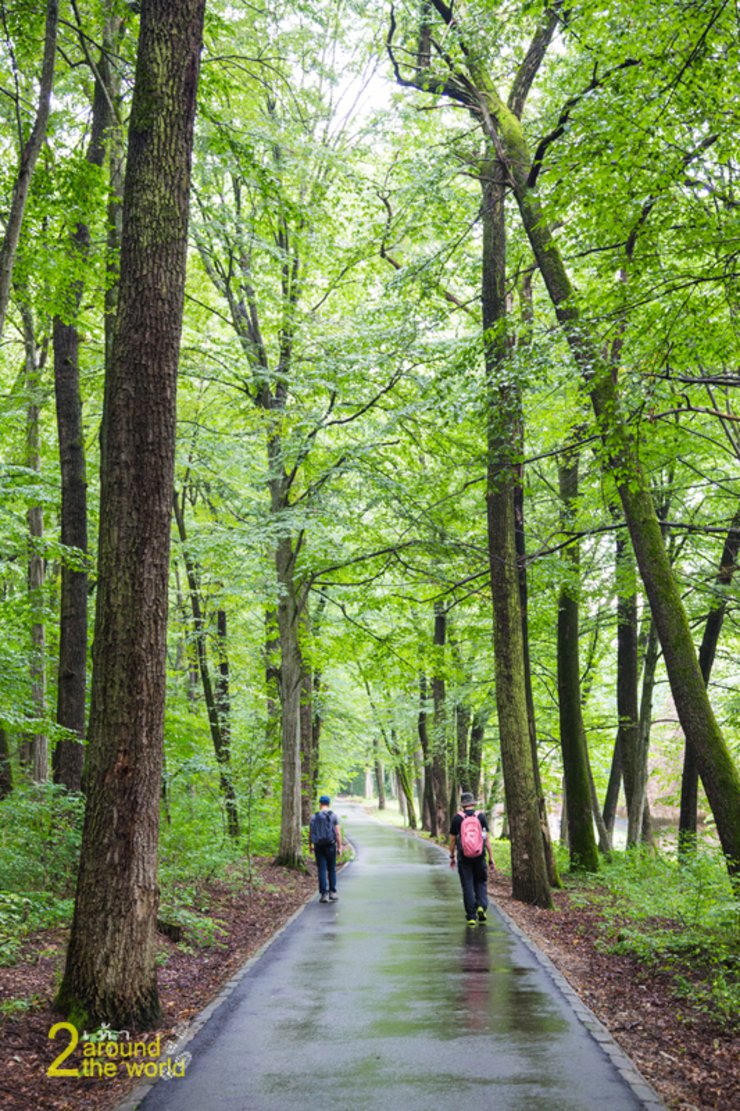
Astra Museum of Traditional Folk Civilization is an open museum. It covers more than 0.96 square km. It is the biggest open museum in Romania and Eastern Europe. The only means to roam around inside is by foot. John said that if we wish to go every place inside, it would take about 2 hours.
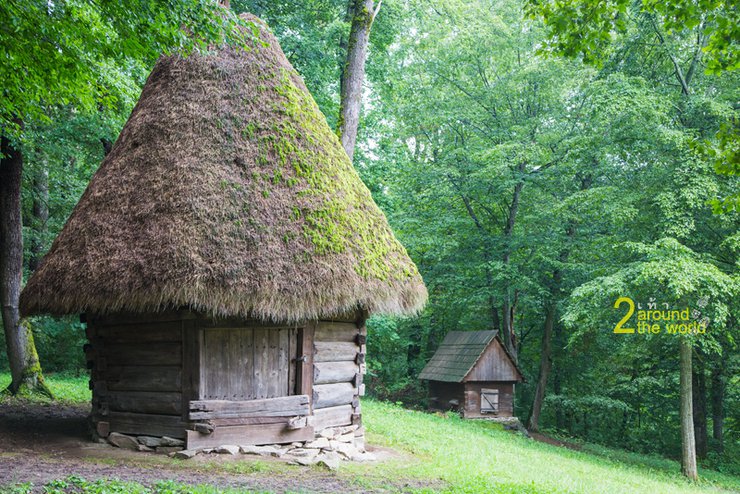
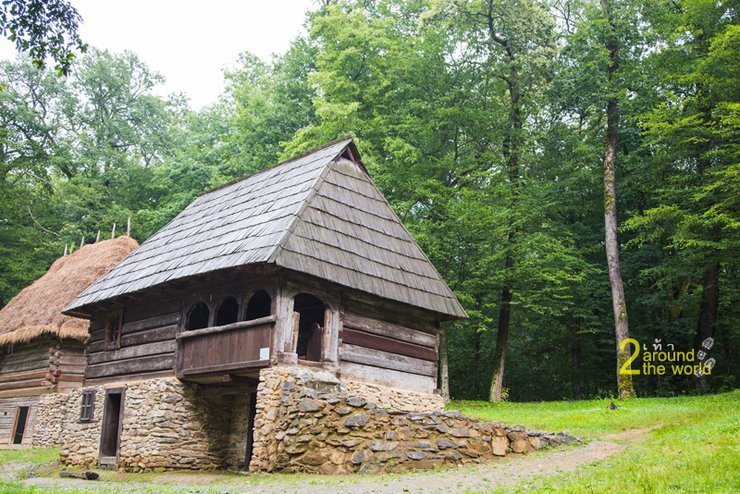
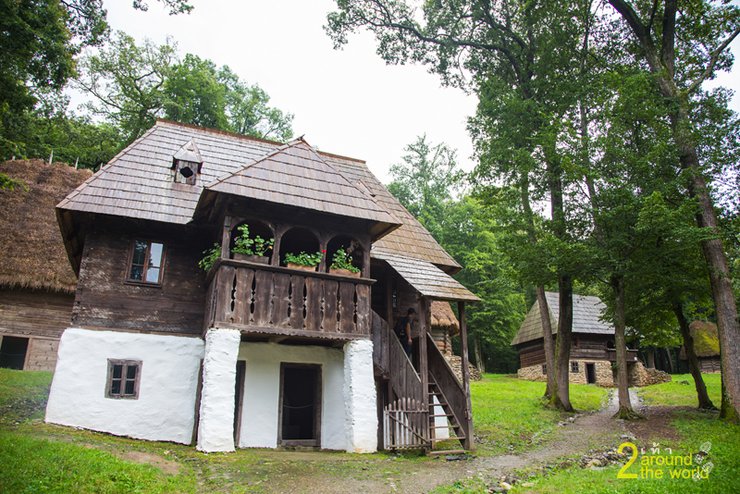
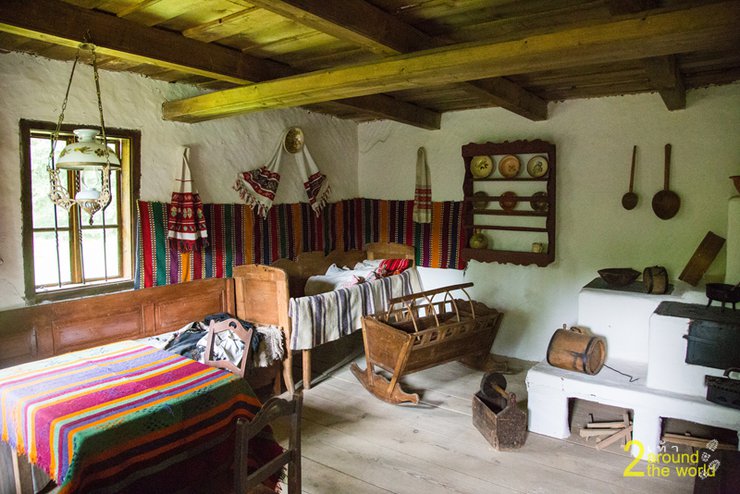

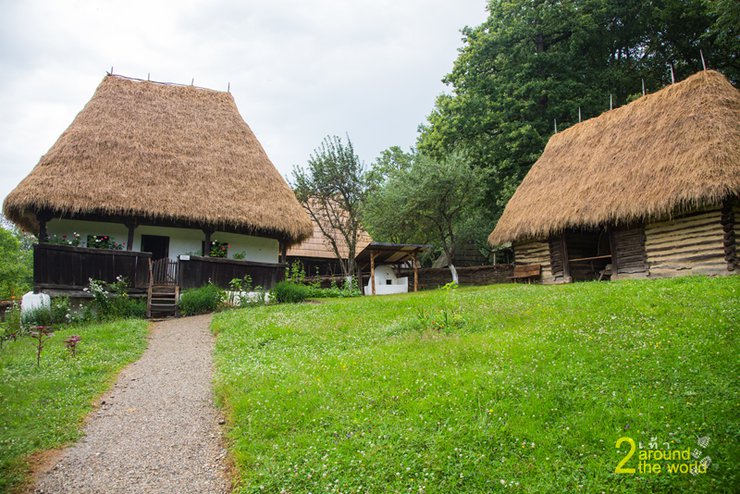
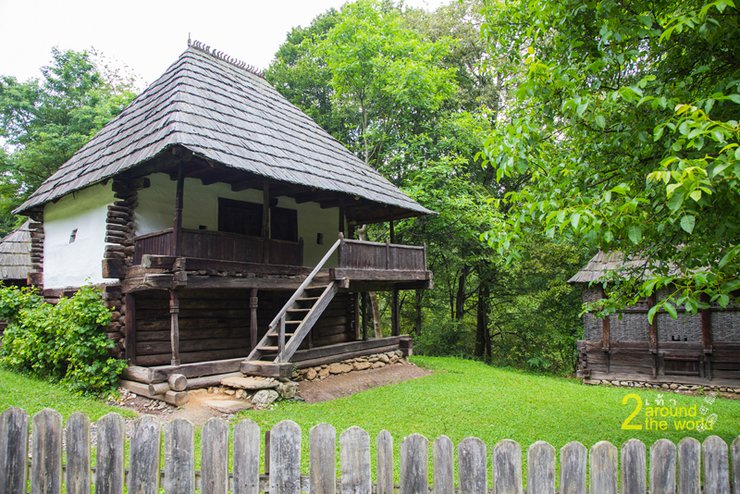
The museum exhibit houses over hundreds of years from various regions across Romania. More than 300 houses have been dismantled and reassembled. Each house is unique according to the climatic conditions of each region, such as in the mountains and cold area like in the Transylvania, the the house is thatched with straw and make it high up to prevent snow and rain freezes on the roof whereas the house in the warm region like in the basin of the Danube River and the Black Sea like Dobrogea, the house is thatched with wood not so high up. We can walk to see inside of each house displayed here as well.
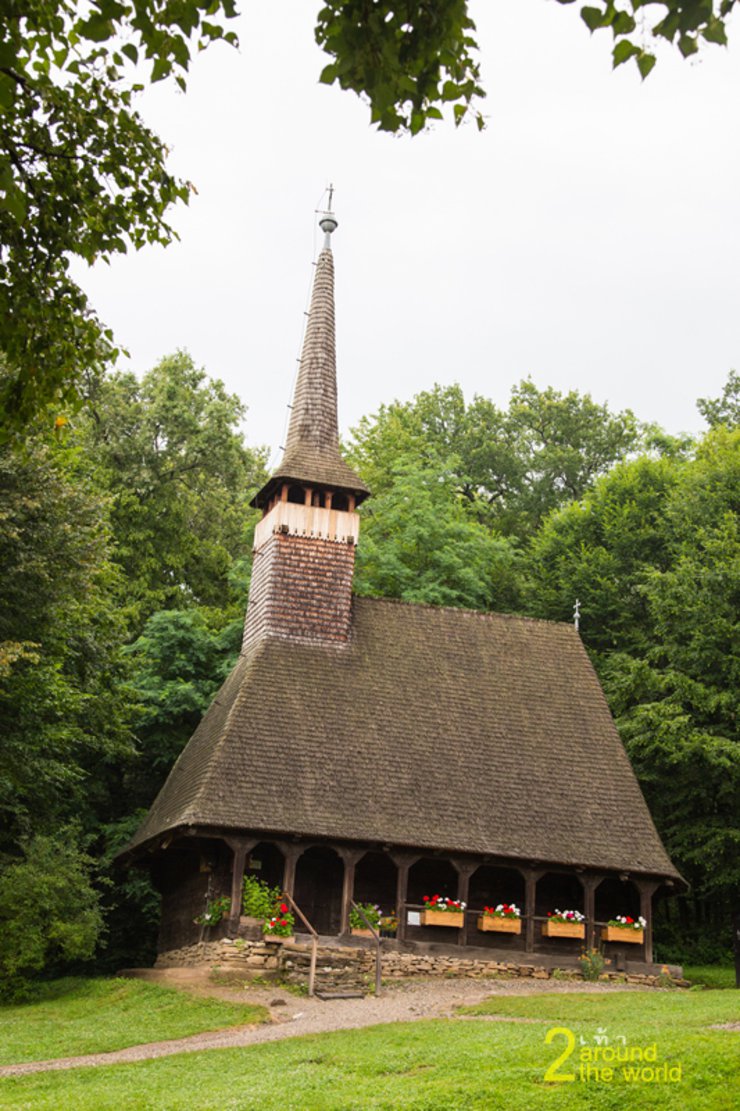
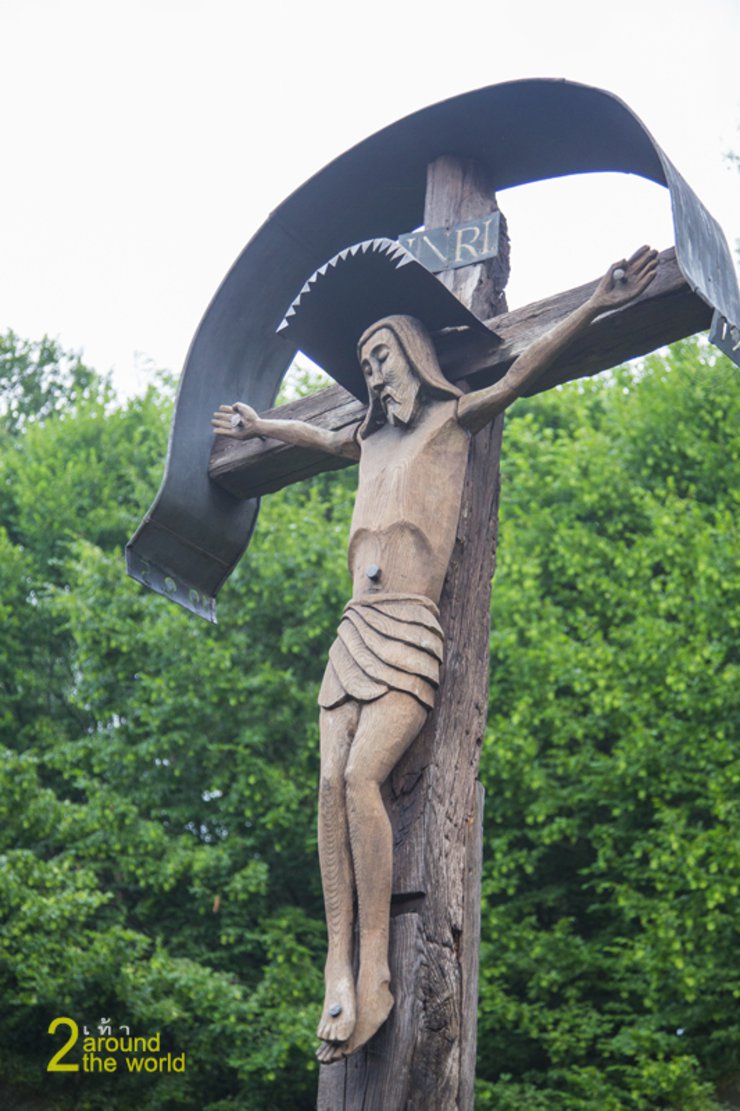
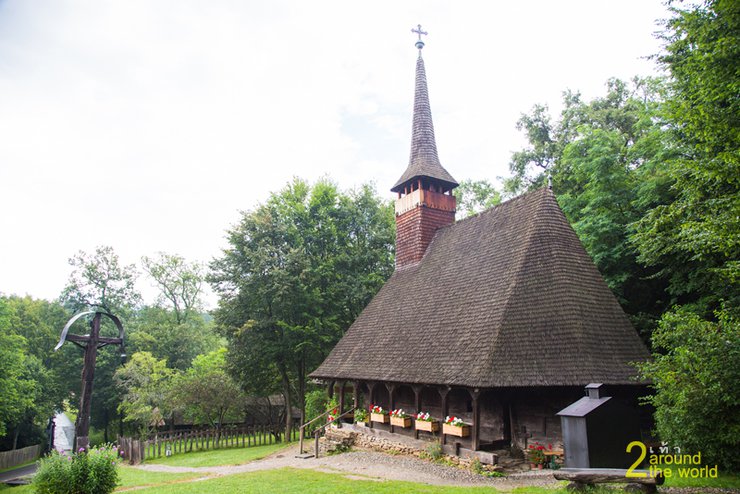
In addition to traditional houses, a wooden church Maramures is also here.
We didn't spend much time here as it's very vast and the rain is still falling. From what we've seen, each house loooks similar so we all agree that it's better to go to Sibiu so we can spend more time there.
Astra Museum of Traditional Folk Civilization is only 3 km away from Sibiu. So we soon reach Sibiu.
Sibiu is an important city and the administrative center of the region of Transylvania in the Middle Ages. It used to be ruled by various powers, including the Romans, Turks, Hungary, Vienna, and Habsburg before it became Romania after the World War II. Currently, the city has gained a reputation as one of the most unique cities in Europe. The city was recognized as the UNESCO World Heritage in 2004 and more than 12 attractions are listed as the architectural heritage. It has also been honored as the European Capital of Culture in 2007.
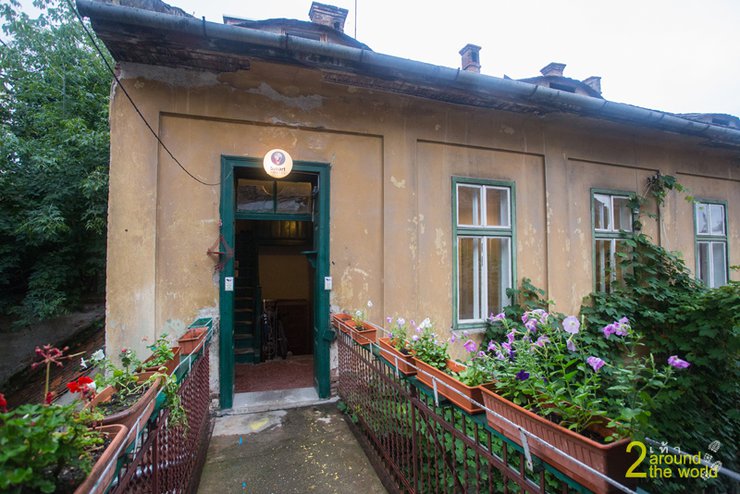
Before anything else, let's put our luggage at the Smart Hostel which is located in old town area.
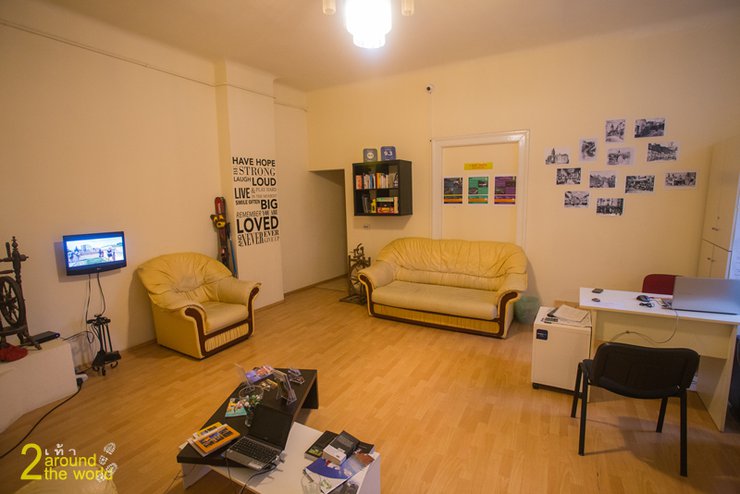
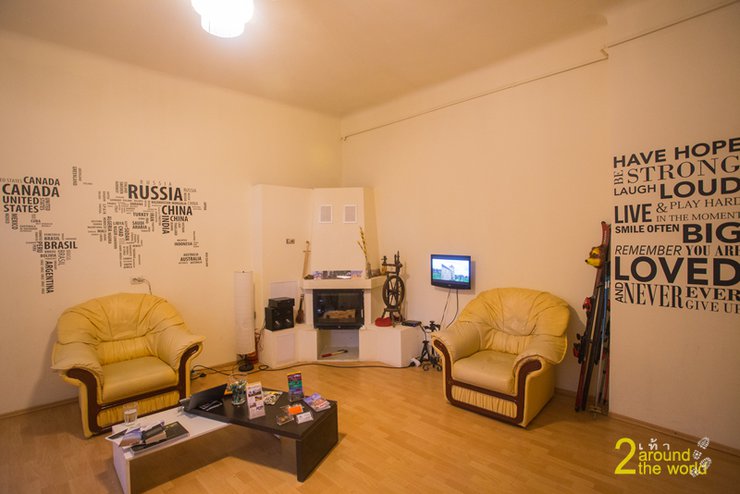
A small table is there for check in and check out. The guests can also sit to relax around.
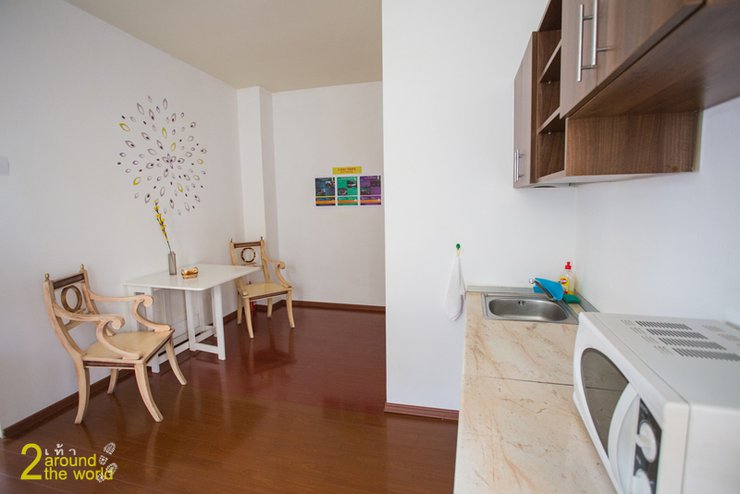
My room is opposite to the lobby. It is a big room with two bedrooms and equips with small area for kitchen and bathroom.
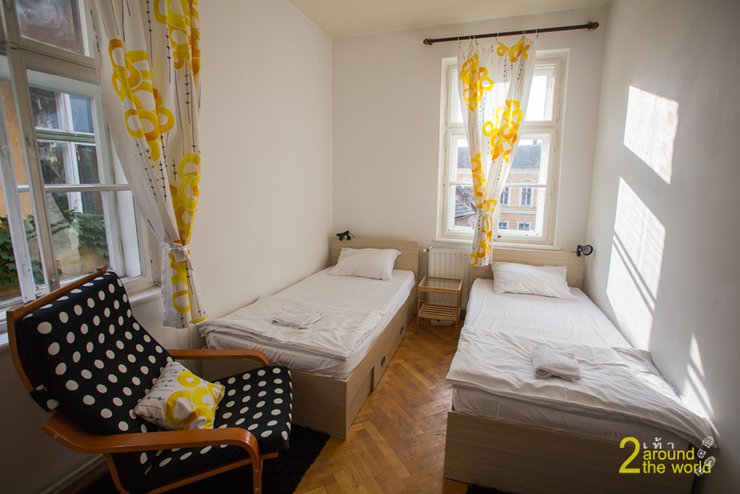
This is my bedroom. I think from 6 nights spent in hostel (excluding a night at the hotel), this is the best one as it's very spacious with lots of facilities. More importantly, the towel is provided (other hostel didn't have it provided).
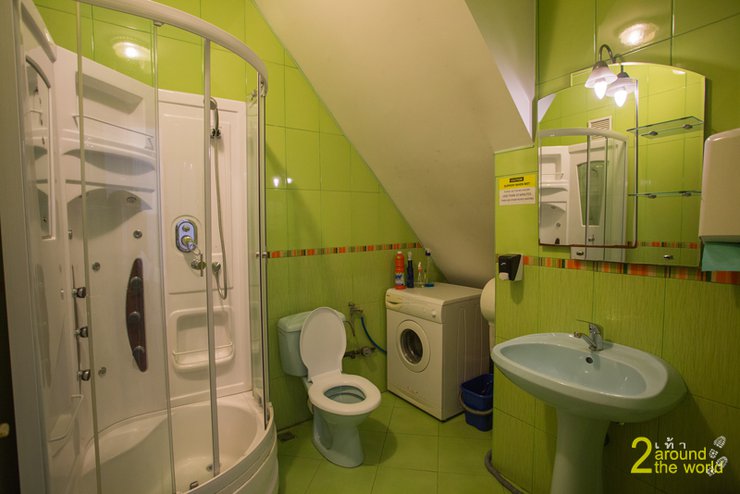
The shower area is much bigger than the first night at Bucharest.
After unpacking things, we need to hurry. Our next program is to view Sibiu from high angle on the clock tower of Biserica Evanghelica.
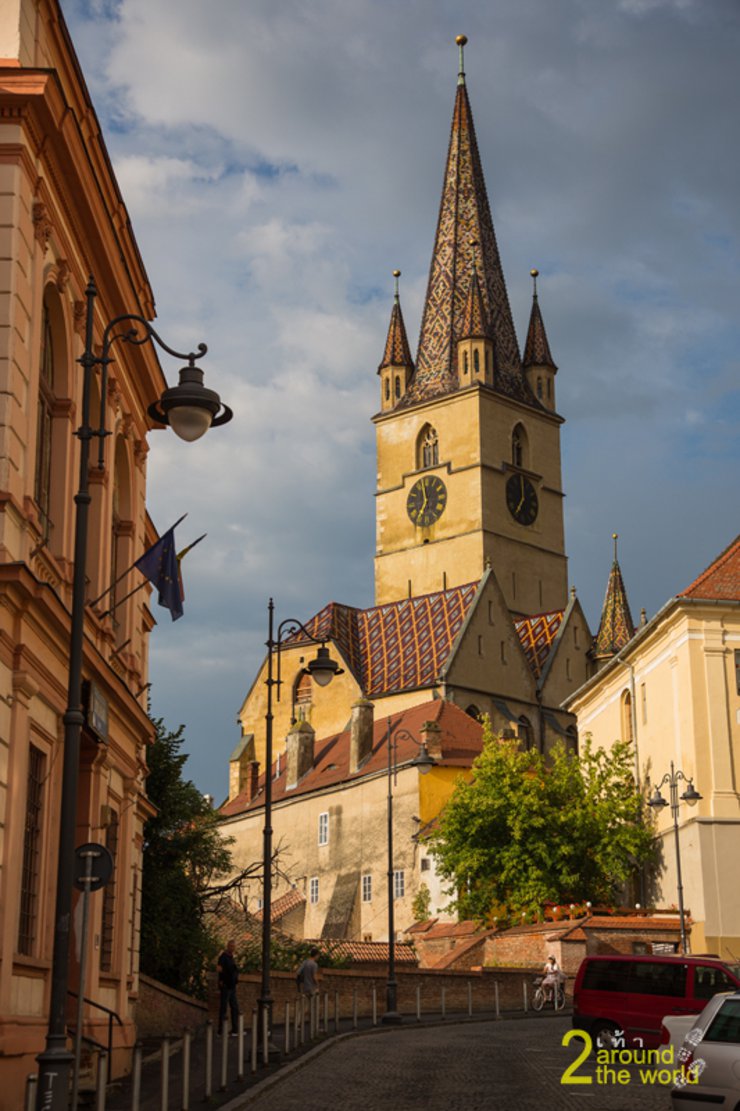
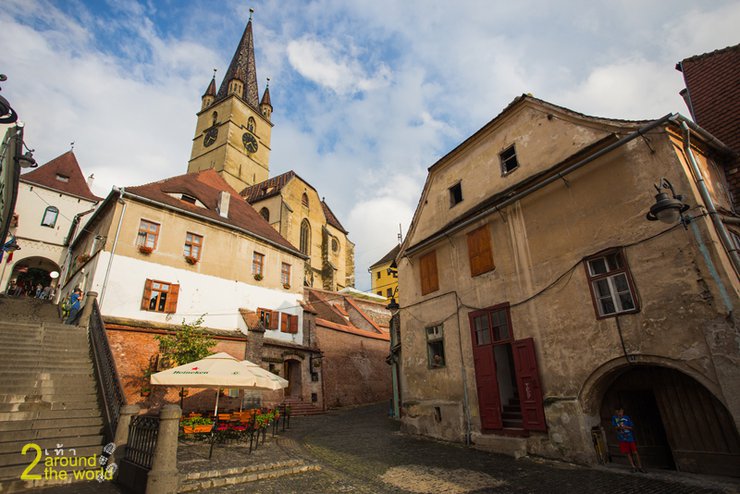
Did you see those 4 spires on the chapel? That's where I'm going for the view.
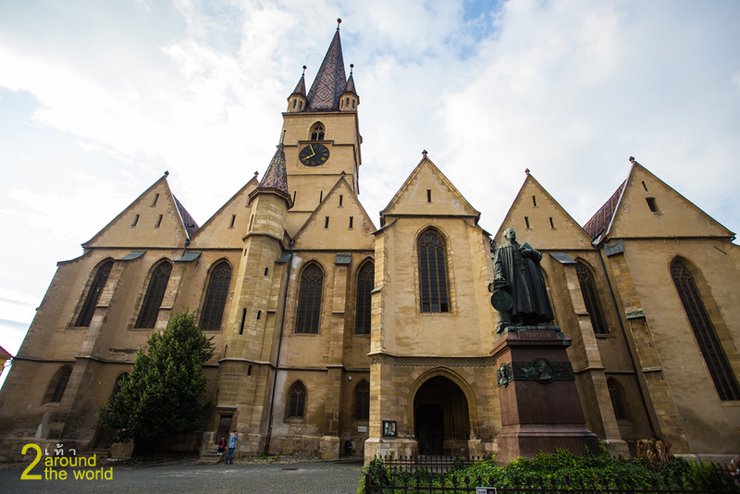
Biserica Evanghelica or the Lutheran Cathedral of Saint Mary is a chapel to perform Protestant religious rituals. This chapel was built in 1377 and was completed in 1520 as the greatest Gothic architecture in the region of Transylvania. The clock tower has a height of 73.37 meters. It is the second tallest chapel in Transylvania region.
I arrive at this chapel just right before it closes (the chapel is closed for entry at 19.30 p.m. and closed everything at 20.00 p.m.) The admission fee is 10 lei and the photography is free of charge.
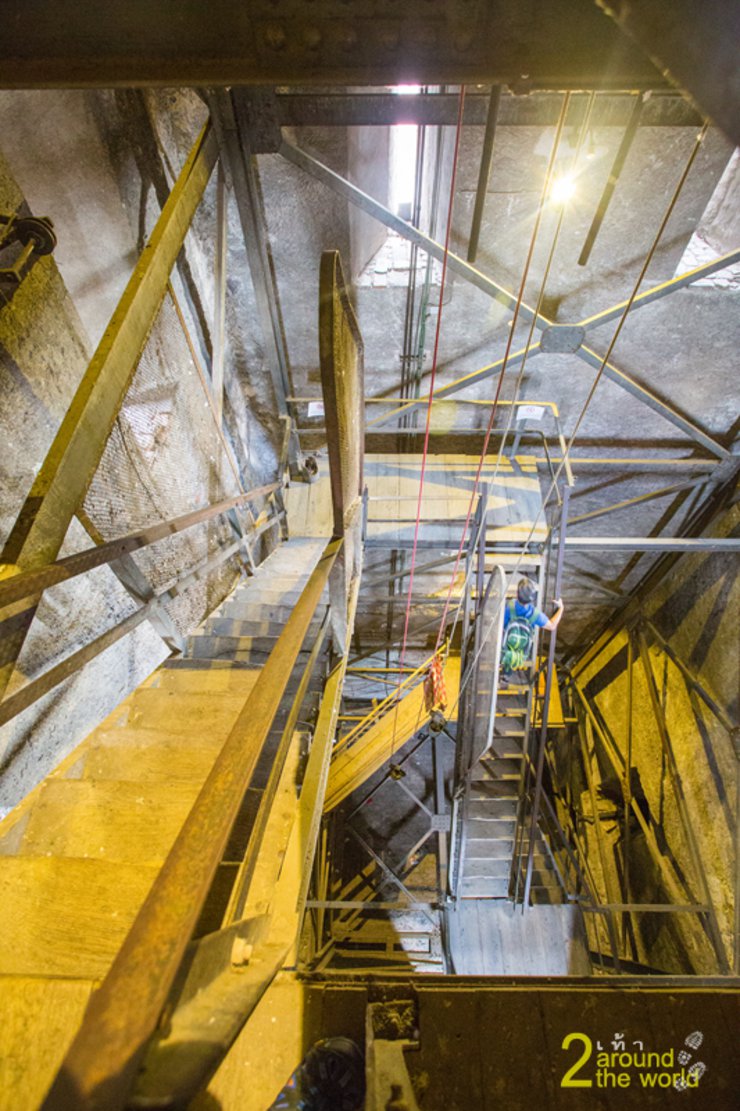
The tower has a spiral staircase made of steel and wood. We can see above from below. I need to pay extra care for each step as I'm afraid that it might not be able to handle my weight.
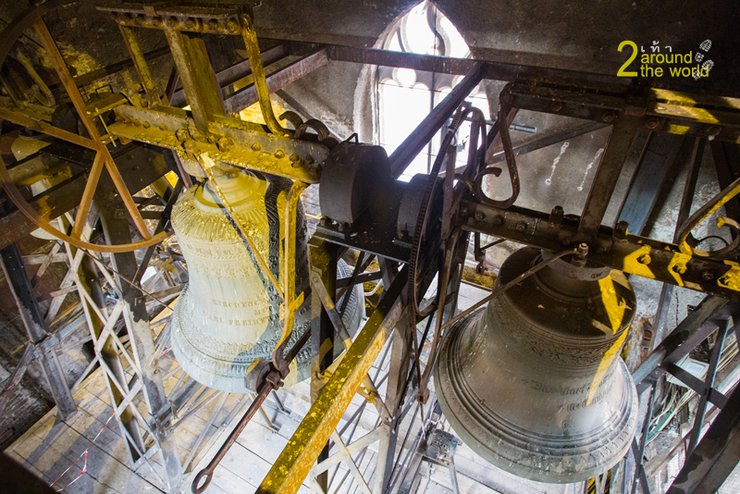
When we walk up a while, we will see how the clock works as well as two big bells that ring every hour.
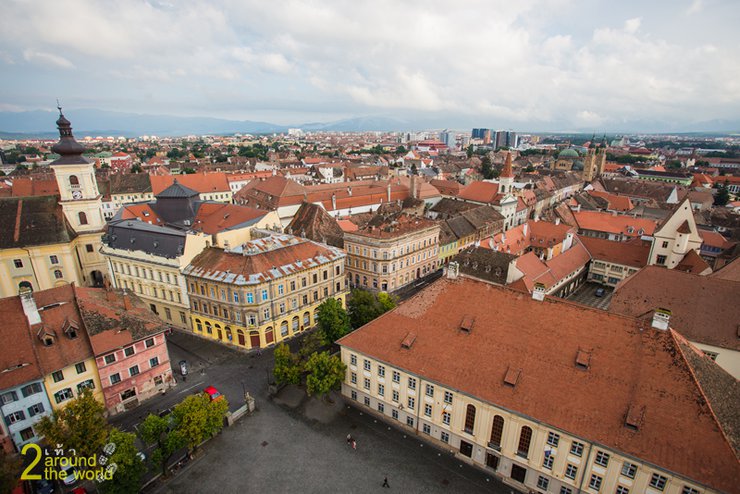
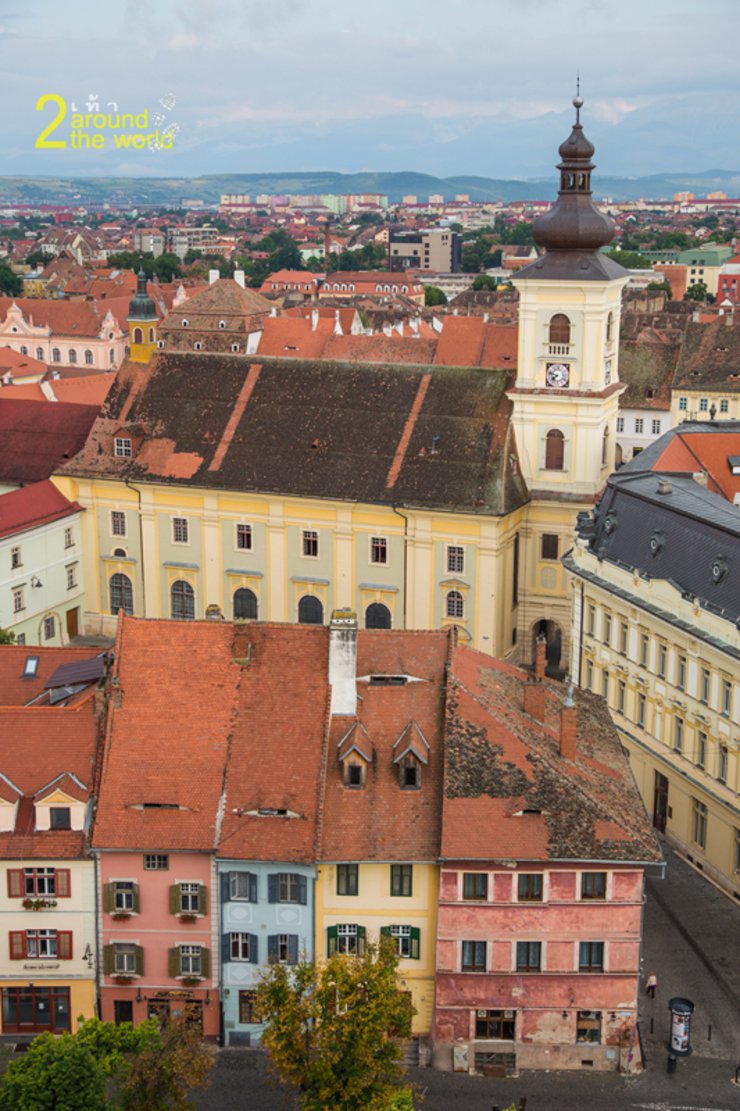
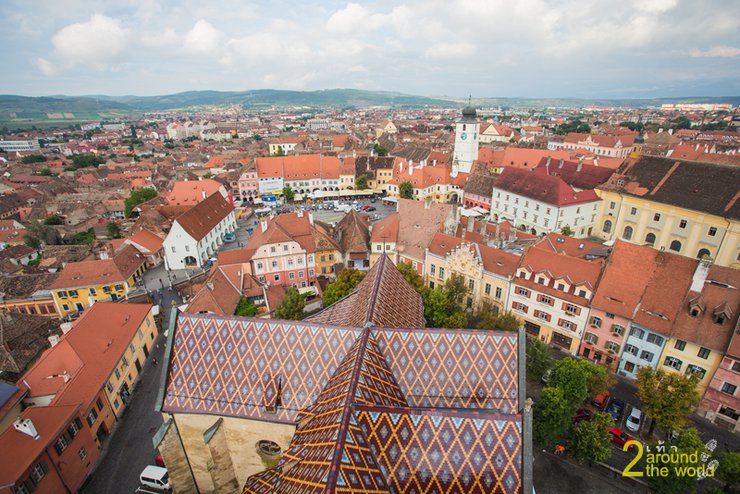
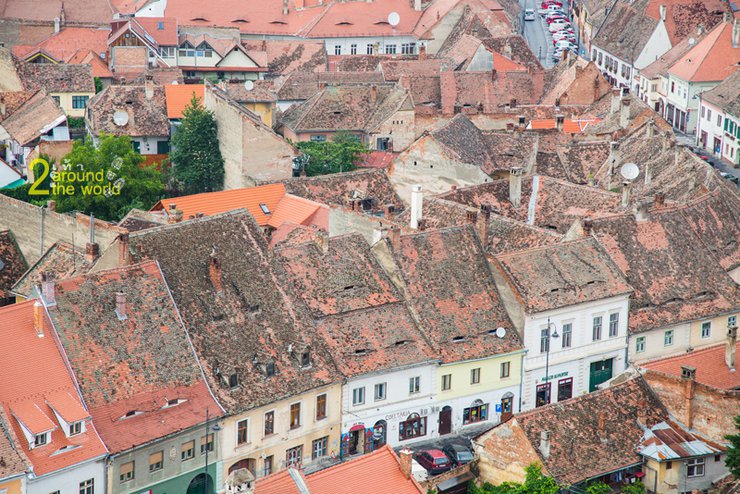
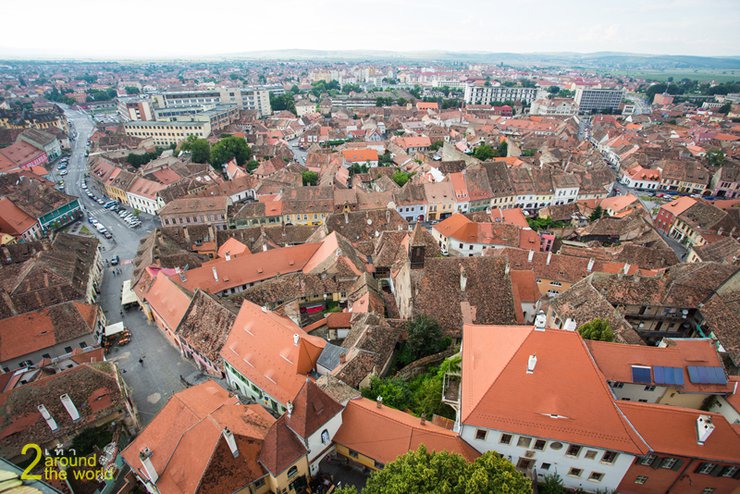

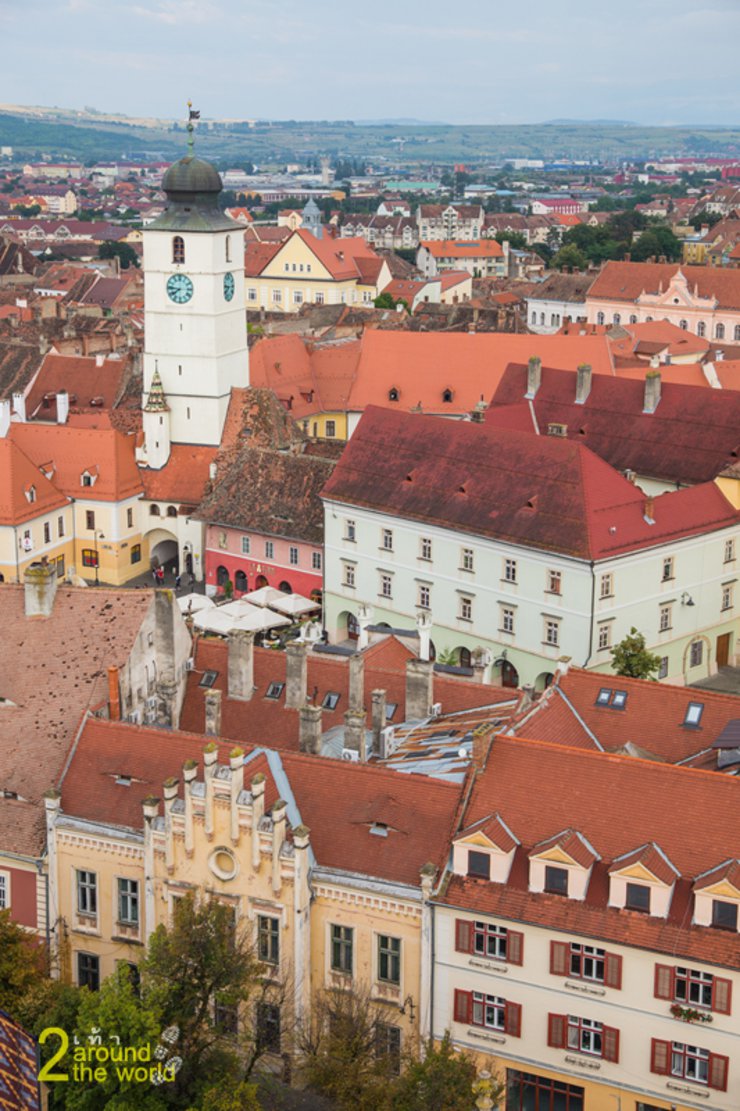
It's quite exhausting walking up here. We all are sweating. But once we see this panoramic high angle view of Sibiu, it's so worthy and our exhaustion is all gone too.
From this viewpoint, we can view Sibiu in 360 degree. The old town is far stretching and what catches my eyes the most is the facts that each roof is built with clay and it has the window at the attic. These windows look like the eyes that keep watching for the visitors of Sibiu and they don't even blink for a second.
Like I mentioned earlier, this viewpoint is at the 4 spires. These 4 spires used to be the place to hang the death publicly. According to the belief of Protestant ruler, the wrong doers must be killed and hanged at the highest point of the city only.
After enjoying the view enough, now it's time for the interior beauty of this church.
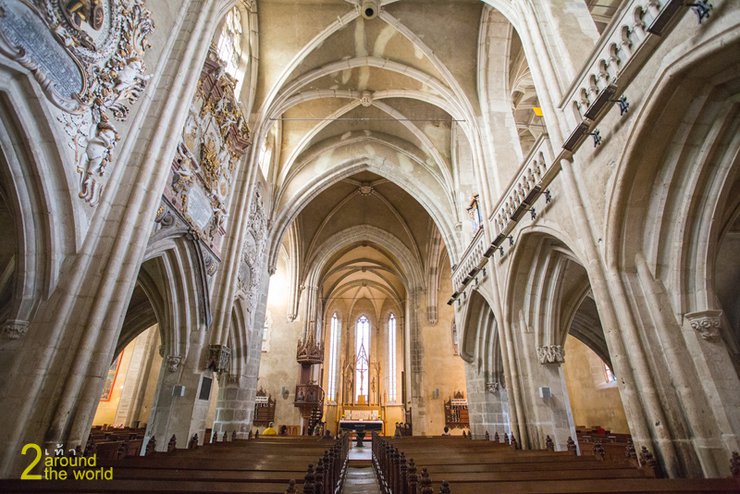

I have to say that this chapel is so splendid and grand. The decoration might not be as beautiful as the churches in Bucharest but the simplicity greatly adds up the mystique to this chapel.
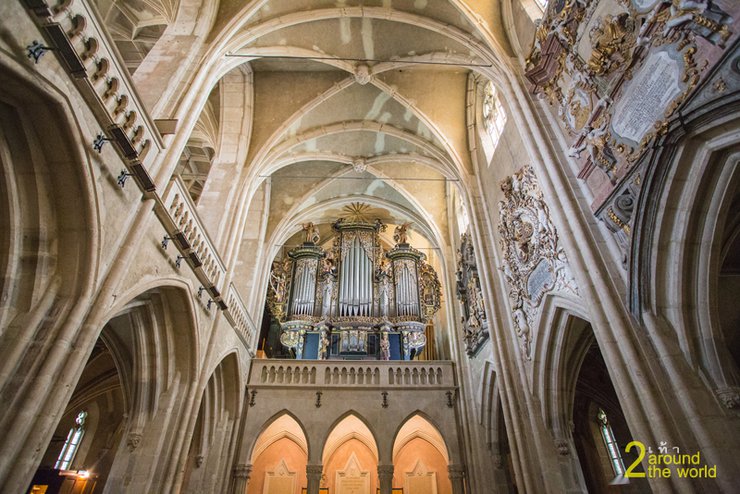
When looking back at the door, I see this giant organs built by Slovak artist. It is the largest organs in Southeast Europe.
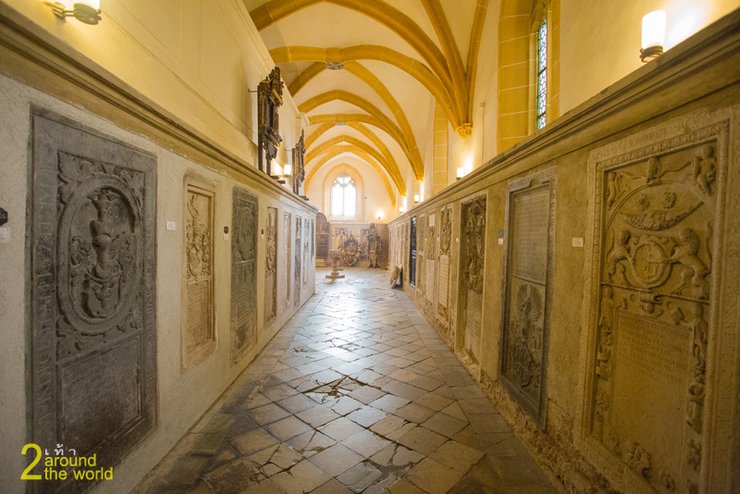
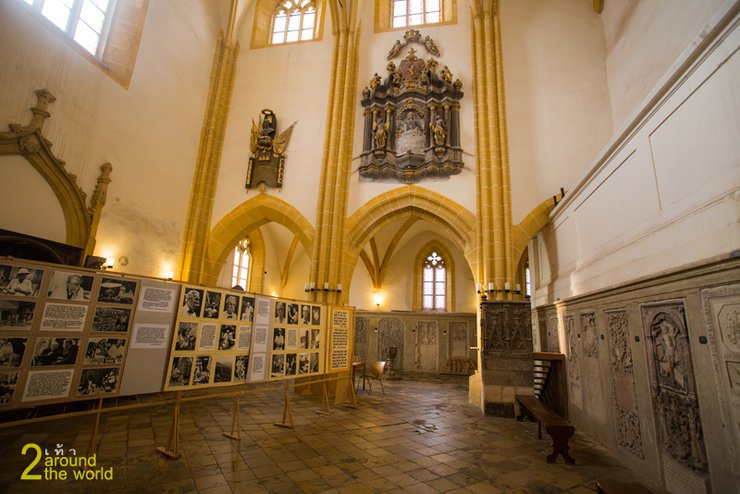
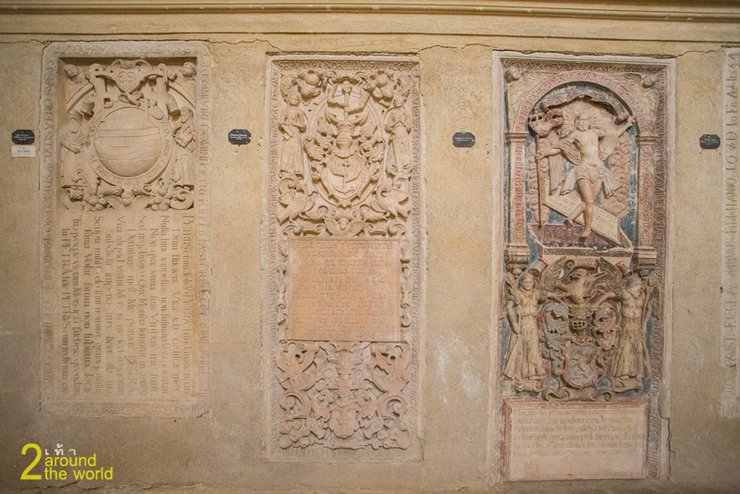
When going behind this, it's the treasure room. It used to collect all the tributes gathered from other city in the past and now some of these tributes are displayed here. This chapel closes at 20.00 p.m.
Another must not miss place when you are in Sibiu is the Liars Bridge.
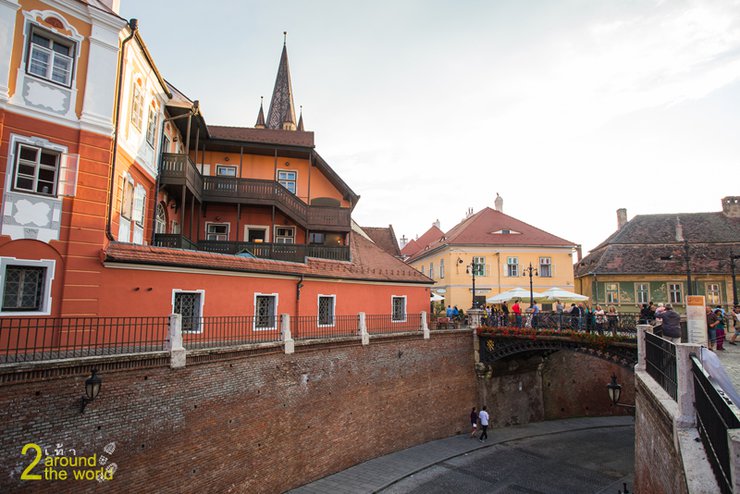
The bridge was built to replace a wooden bridge and connect the path between the two sides of the square in the old town Sibiu. In the past, this bridge was the trade of the merchants and a place where young lovers were dating. It is believe that if anyone lies on the bridge, the bridge will collapse immediately. This bridge is the first steel bridge of the Southeast Europe.

Even though this building looks old, I think it's very charming.
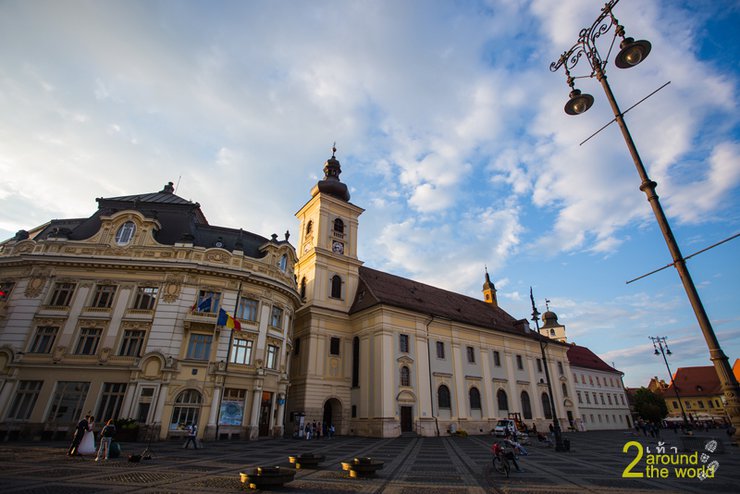
The Piata Mare or the Grand Square is the oldest square of Sibiu. It used to be the center of the city since the early 15th century. It located Brukenthal Palace. It was built as administration office of the government in 1777 before turning into one of the world's oldest museums in 1871.
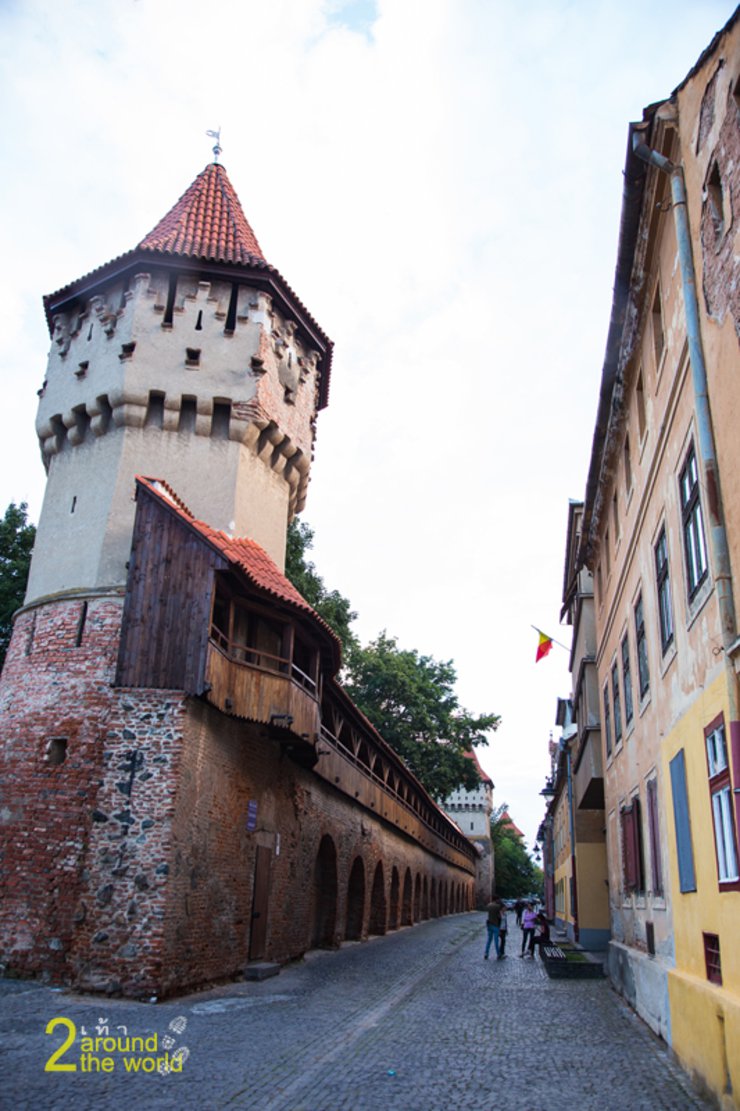
I just keep wandering around and now I'm at Sibiu's Towers.
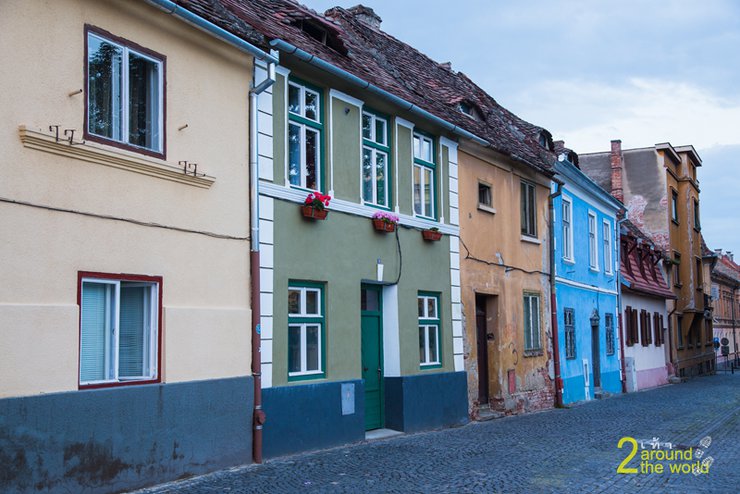
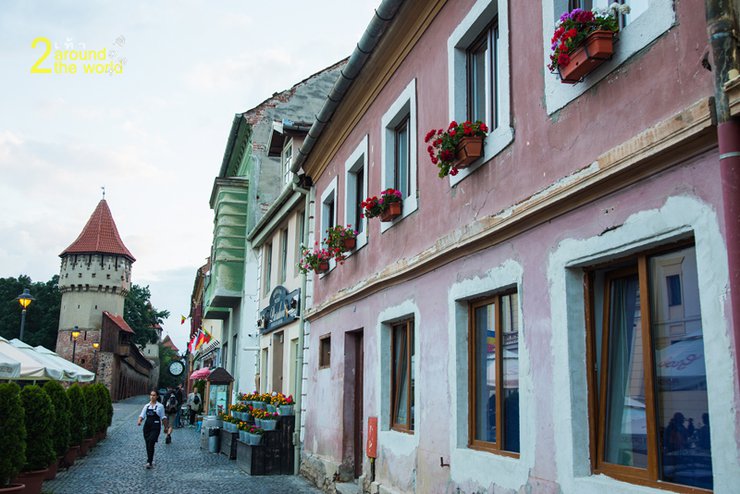
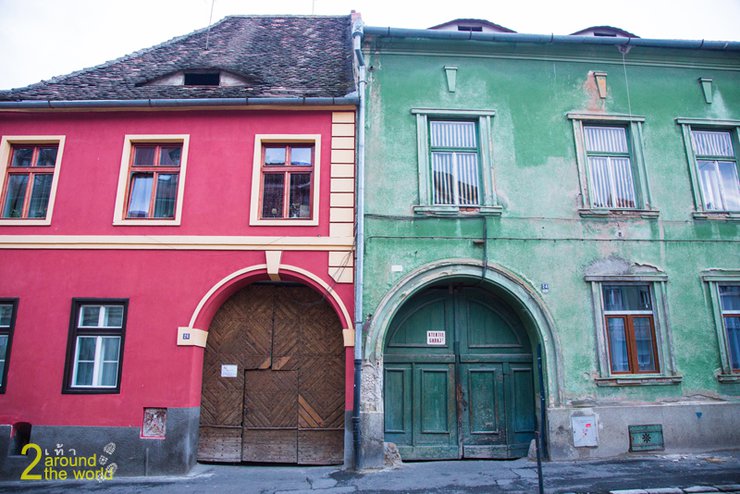
Houses in Sibiu are so charming and very colorful. None of the adjacent house paints with the same color, offering lots of angles for photo shooting. The Forbes ranks the Sibiu as the 8th livable city in Europe.
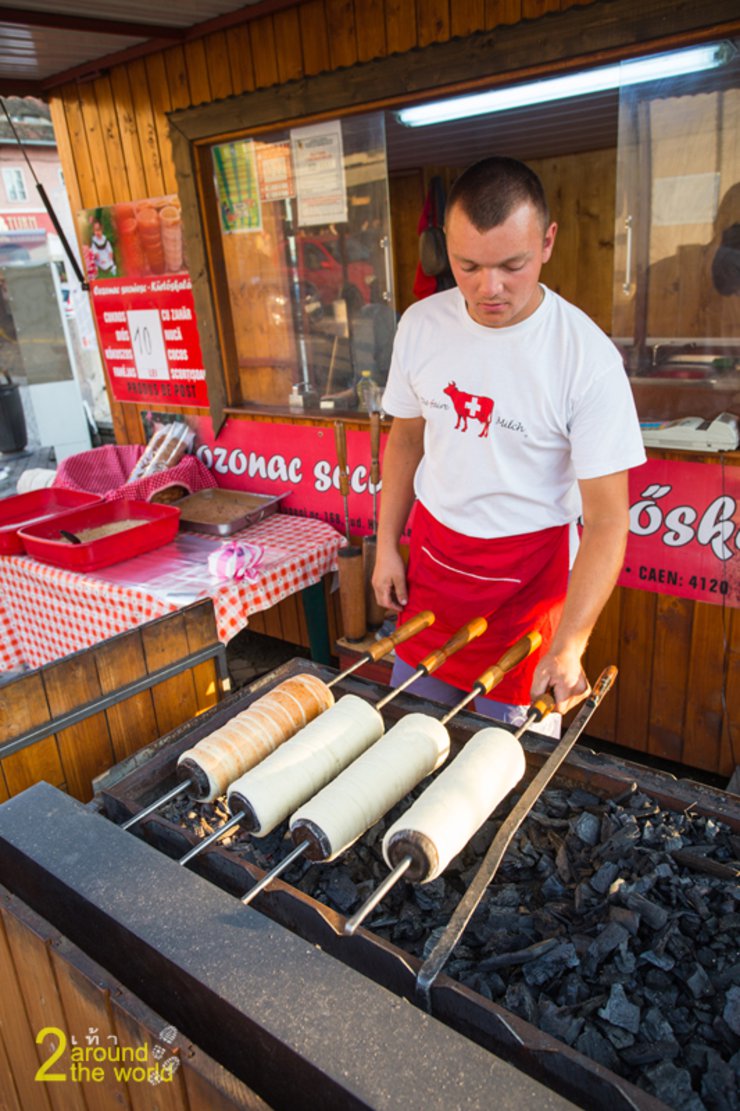
Then, I see the chef is cooking kürtőskalács. It is a dessert that originated in Transylvania. The dough is wrapped around the steel, then it's grilled until the dough is cooked. It's also topped with caramel or several kind of nuts. It's quite delicious. It is 10 lei each.
I wander around until 21.45 p.m. and I must admit that I'm completely torn. So it's time to eat something. I choose to have my dinner at the Grand Plaza.

This restaurant offers local food with local price. Although I have to wait for a while, it's all worthy.
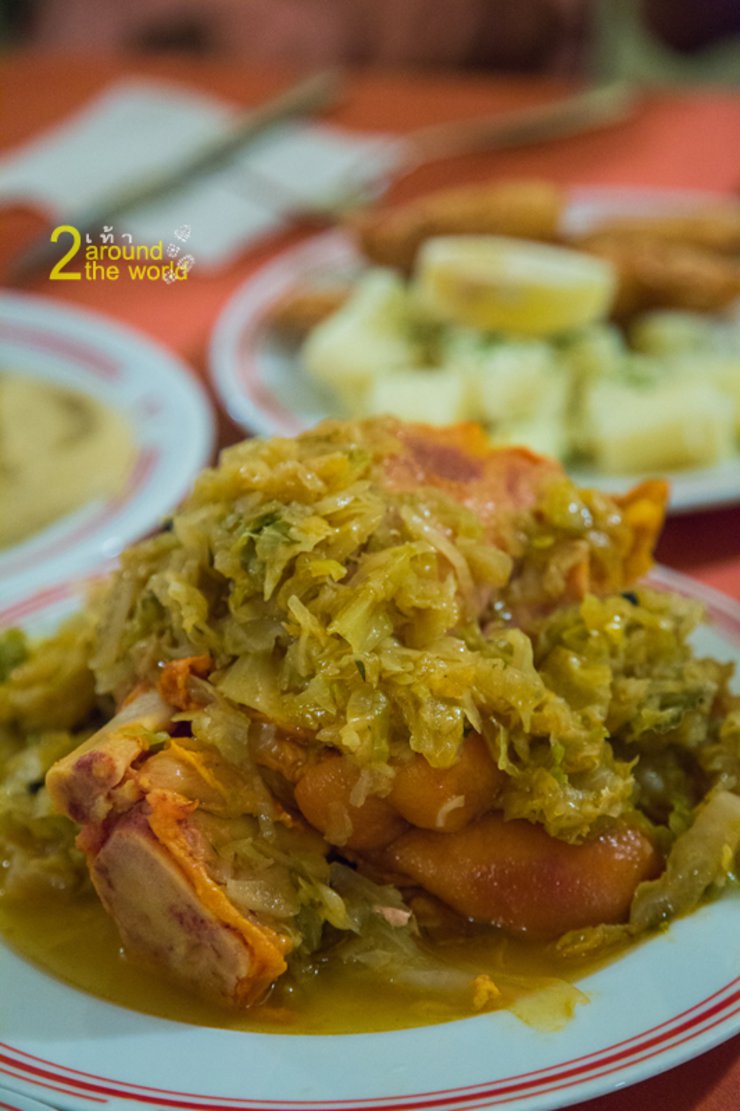
We start with the Pork Knuckle and Pickles. The taste and looks is like the one in Thailand.

Fried Chicken
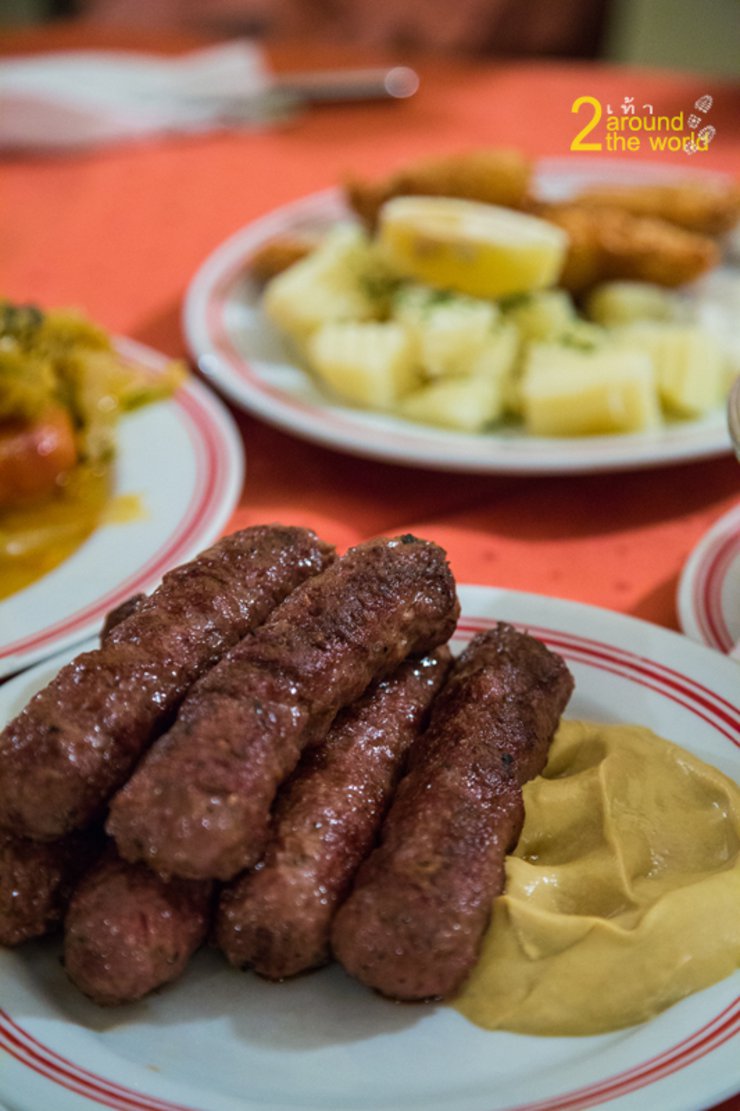
Romanian Sausage still has salty taste. Firstly I thought that the first restaurant made it salty but after several tries at different restaurants, now I know that Romanians love salty taste.
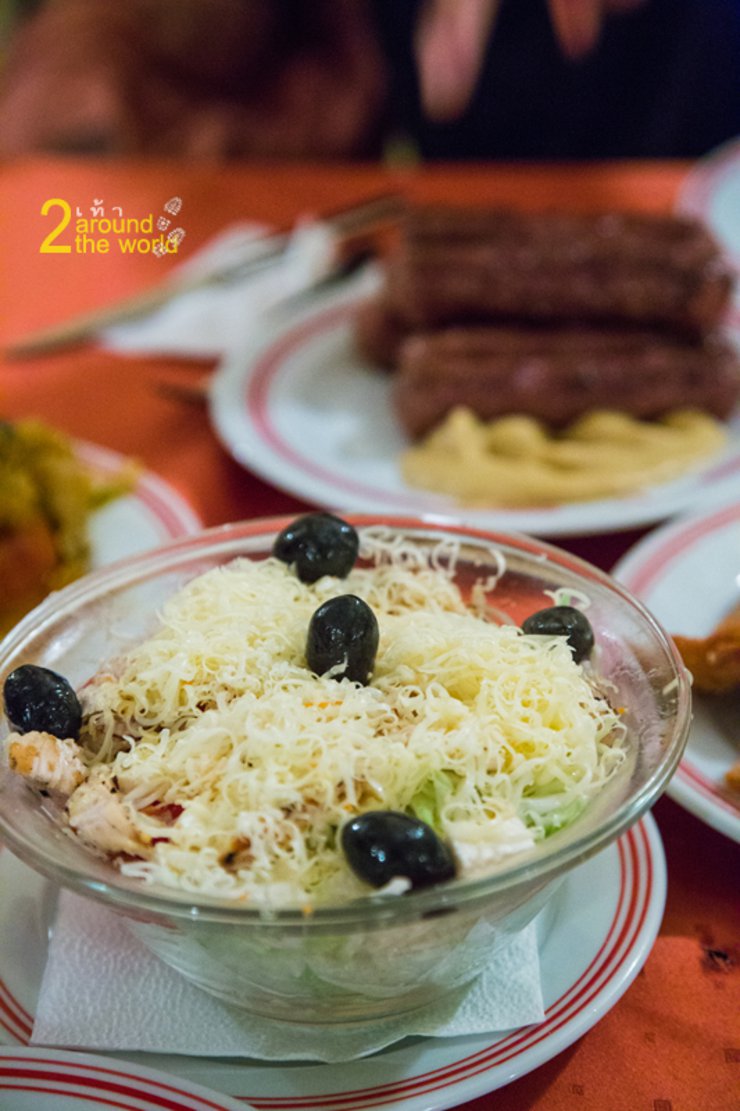
And vegetable salad topped with shredded cheese is the last dish. This meal is 79 lei.
After dinner, if I could, I would crawl back to the hostel as I'm super exhausted.
I set my alarm clock at 5 a.m. this morning in order to capture the Sibiu at dawn. The sky was already blue when we had our breakfast so this morning is another chance to capture the dawn light.
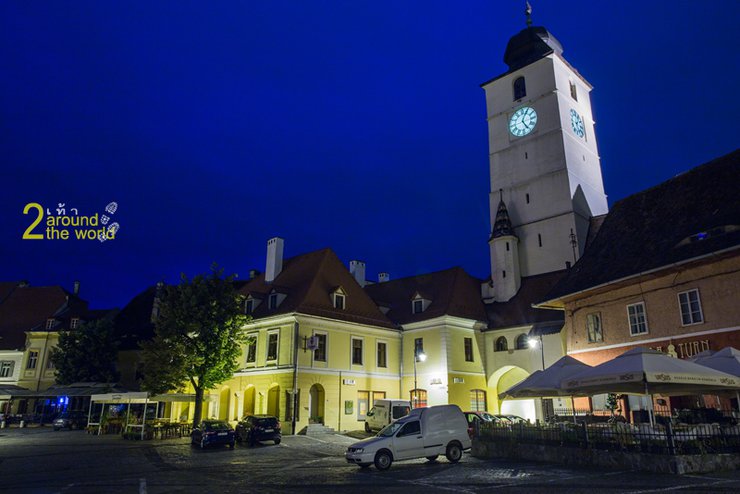
Let's start with the Council Tower which was built in the early 13th century for the fortress and military observatory purposes. Later, it was changed to be a clock tower and observatory tower. This clock tower is another spot where we can go up to enjoy a high angle view of Sibiu.

The Liars Bridge
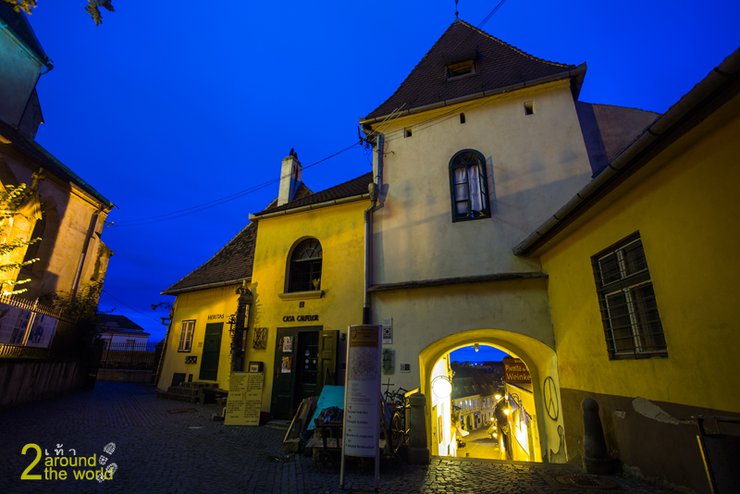
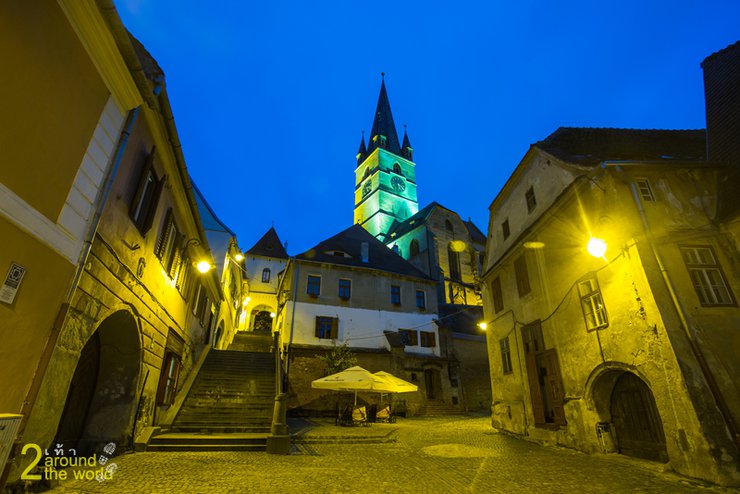
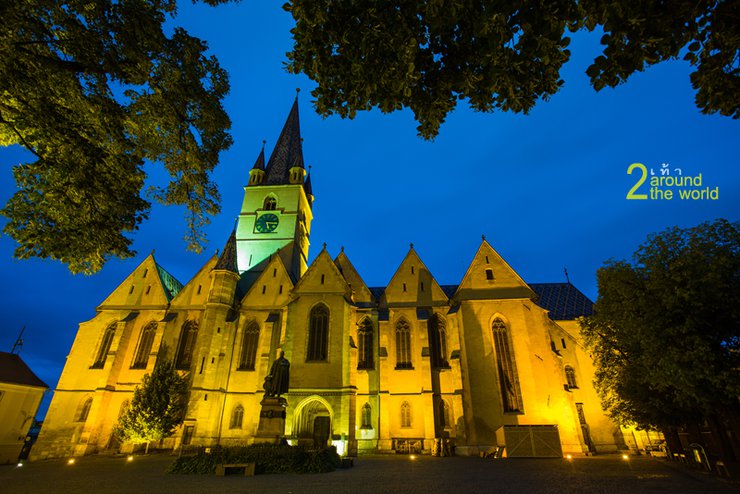
Biserica Evanghelica
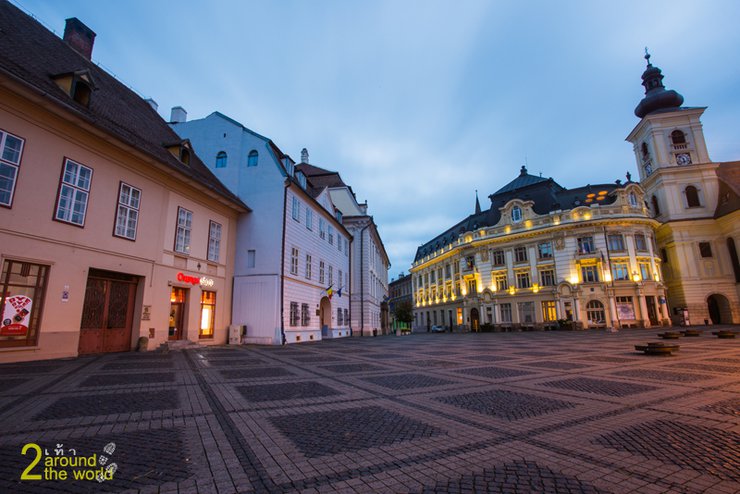
Grand Square
On one hand, I want to take photos. On the other hand, I get scared when taking photos alone while the majority is asleep especially when someone follows me and it makes me walk even faster. Nonetheless, nothing happens.
At 05.30 a.m. the lights at important buildings start to light up. I walk to the Orthodox Cathedral which is quite far from other places. Right before I reach there, the light is off in front of me. I'm very sad and can only walk to find photo spots at other places.

It rains again this morning, luckily that I have already finished taking lights shots.
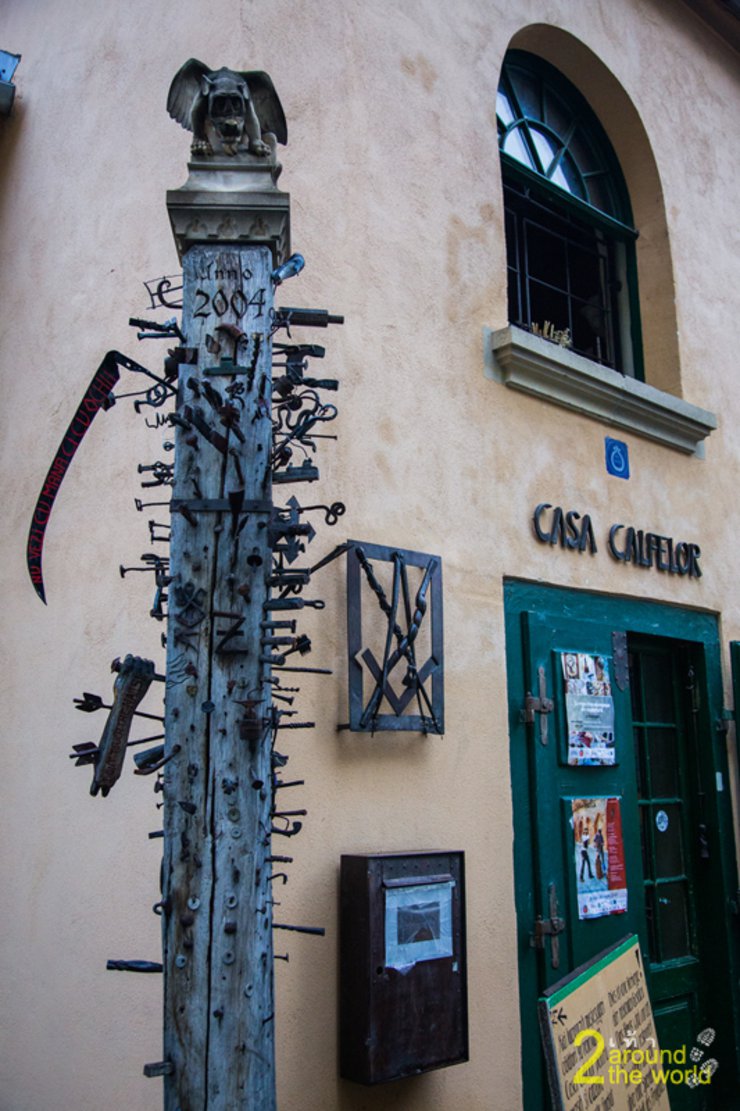
I'm not sure if this pole used to be the beam of that bride before it became the Liars Bridge. Other story said that that wooden bridge used to chain and hang the prisoners in the past.

It's all refreshing after the morning rain.
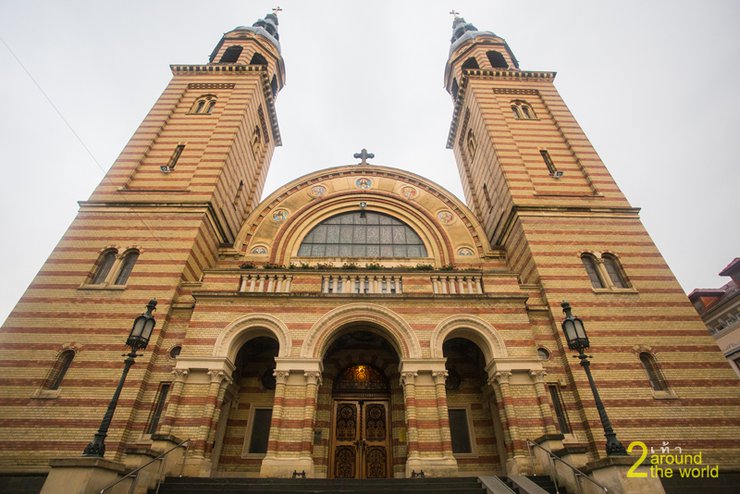
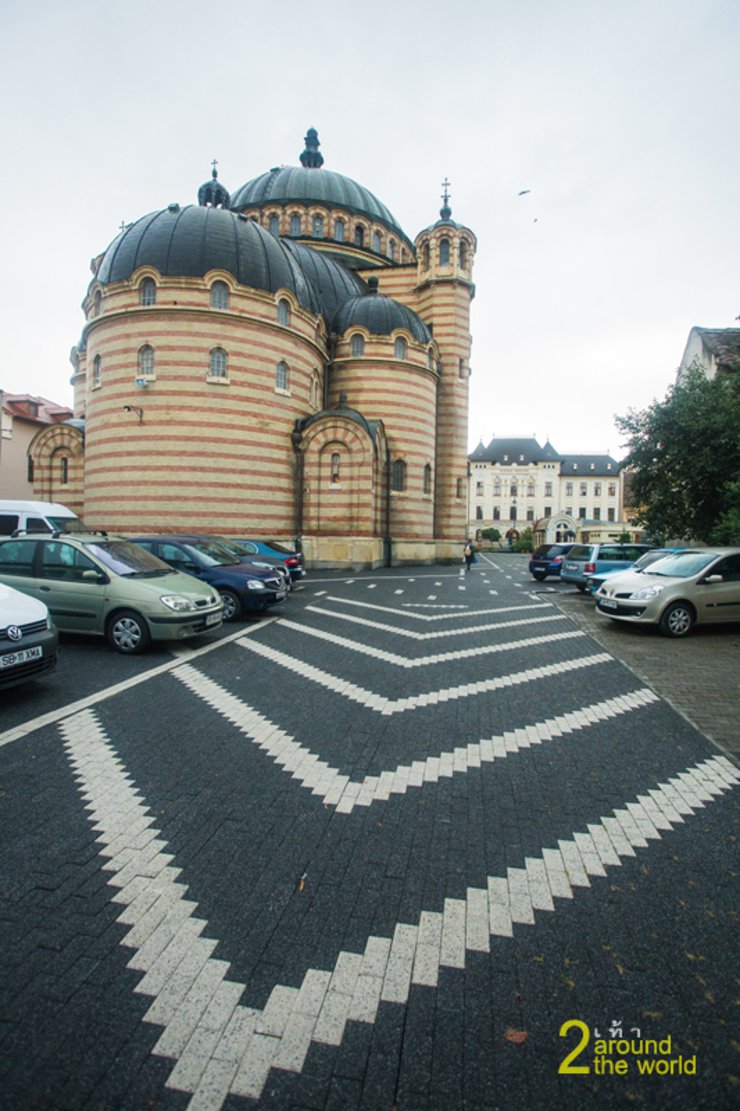
I come back to the Orthodox Cathedral again after being disappointed that the light was off when I reached earlier. Orthodox Cathedral was built in 1902 and completed in 1906. It looks like the Saint Sofia Cathedral in Istanbul, Turkey. It's decorated with Neo-Byzantine architecture. It is the second largest church in Romania. I arrive here too early so I didn't get to appreciate the beauty inside as they yet open for the visit. I'm a bit disappointed.
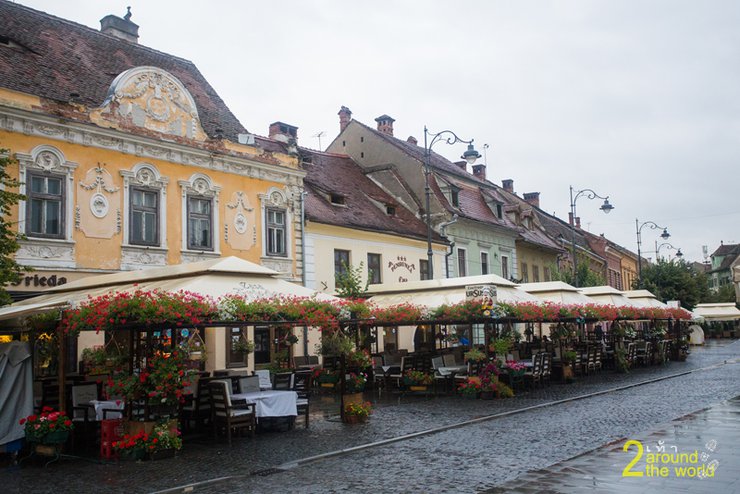
Morning is the best time for photography. Now it's already 07.30 a.m. still almost no one is out on the street.
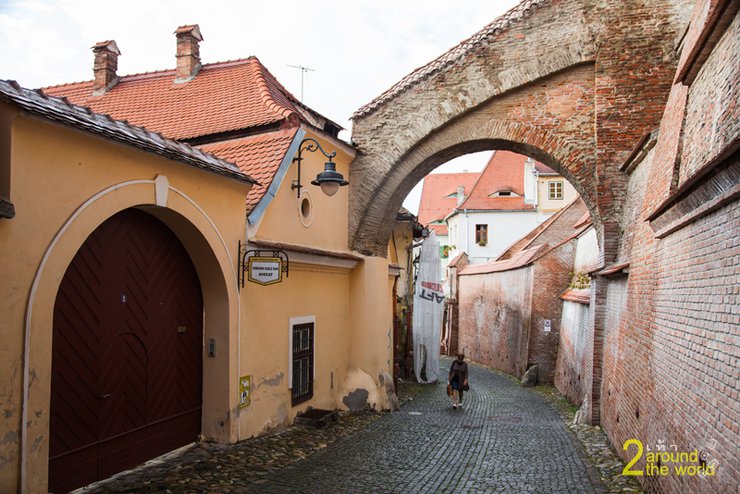
The Stairs Passage is another great architecture which was built in the 13th century. It is another interesting spot for Sibiu. This passage connects the Upper Town and the Lower Town. My hostel is also located right here, such a nice location right?
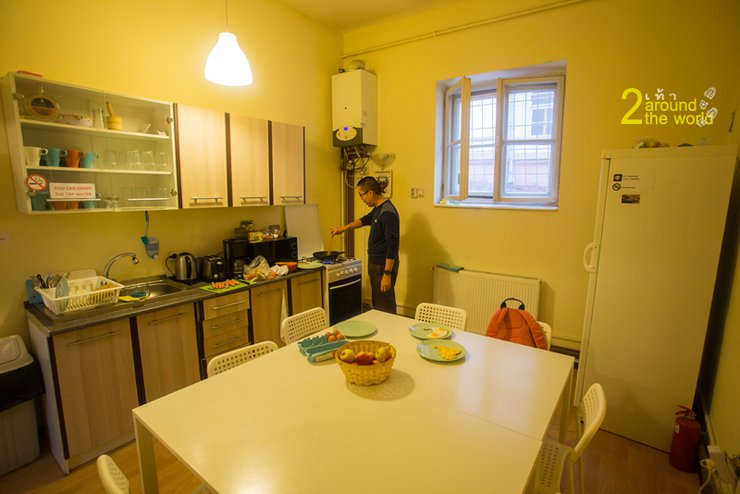
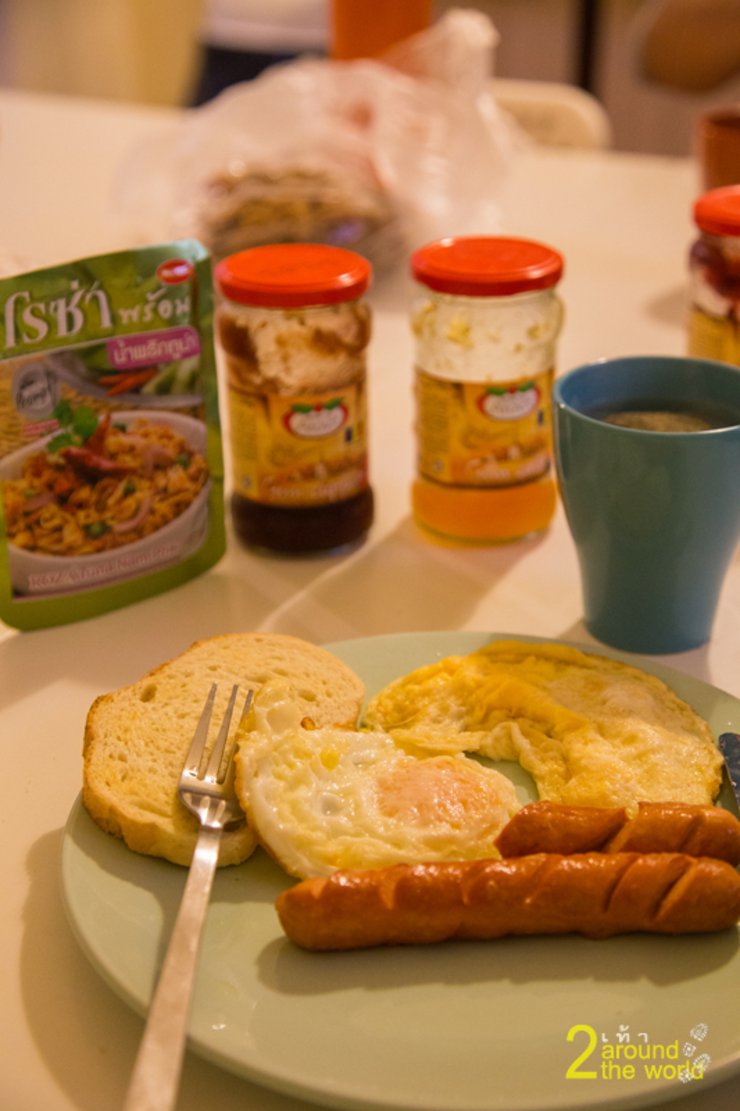
Now, it's the end of morning tour. After taking shower, packing stuff, we come for the breakfast made by "Ki" our leader in this trip who cook it for everyone. Actually, the hostel provides some food like eggs, bread, yam, tea, coffee, fruit juice, yogurt but we didn't know that so we bought this egg and hot dog since yesterday.
Please follow ROMANIA #3 : Medias at
https://th.readme.me/p/5234
ลุงเสื้อเขียว
Tuesday, November 8, 2016 5:14 PM

